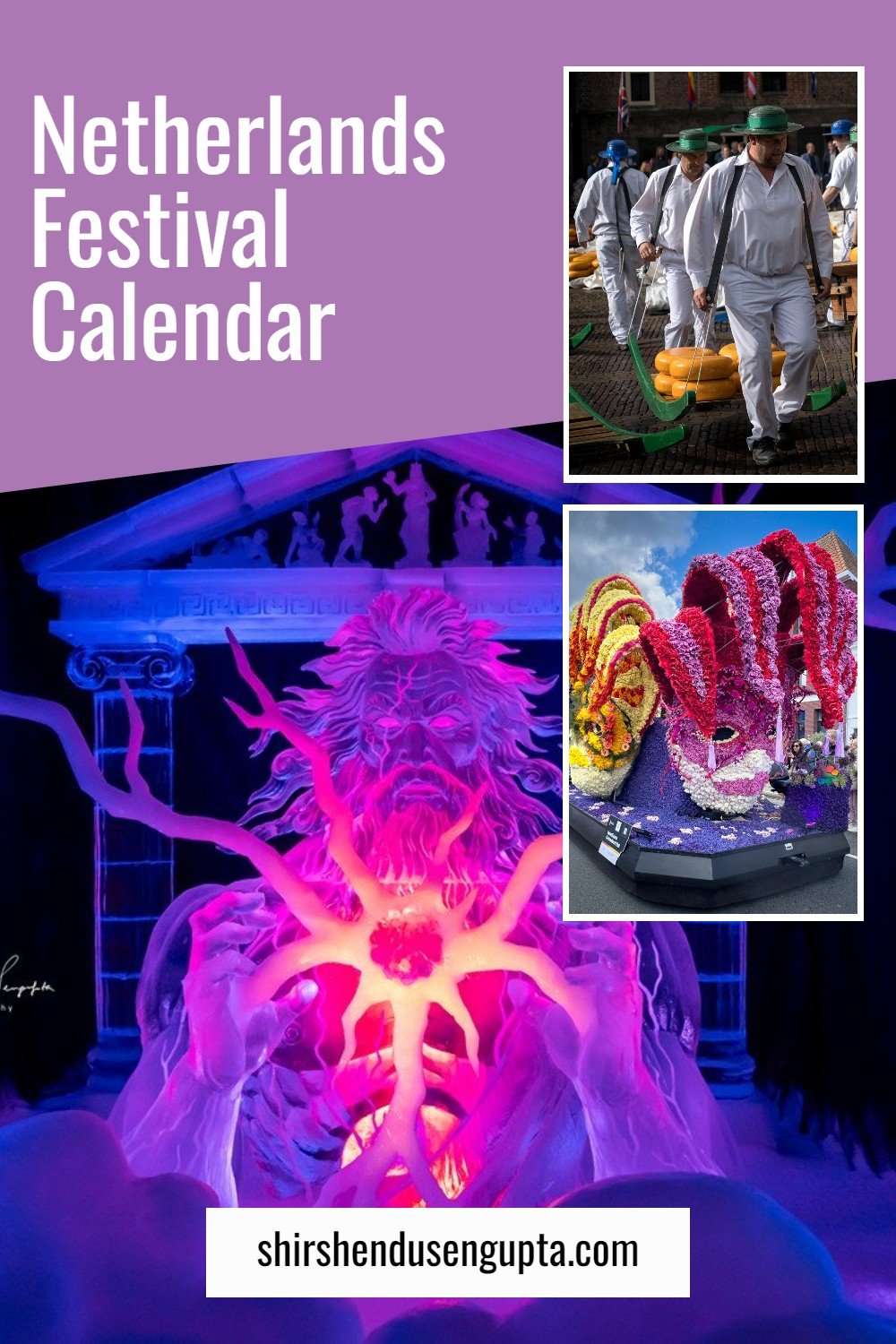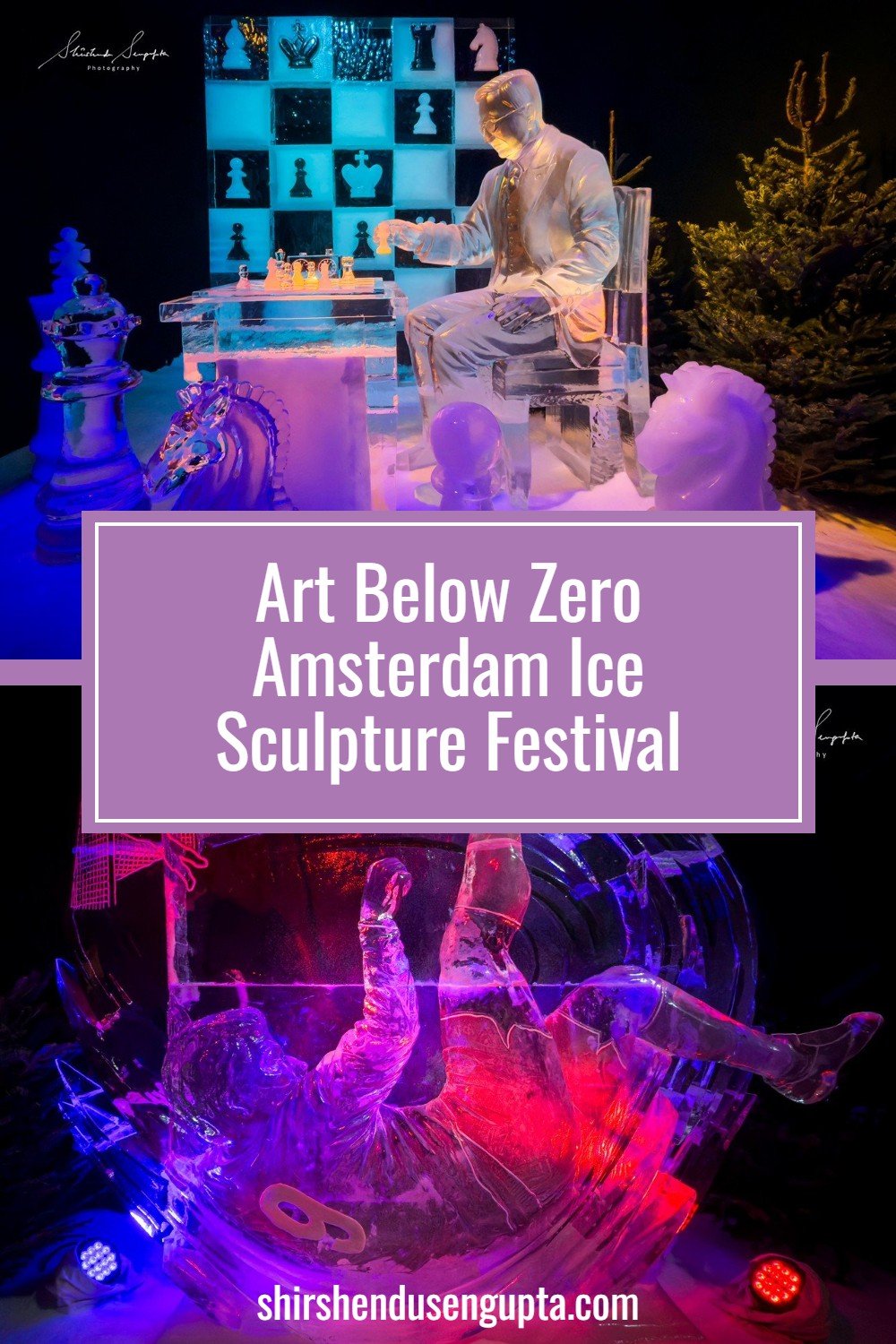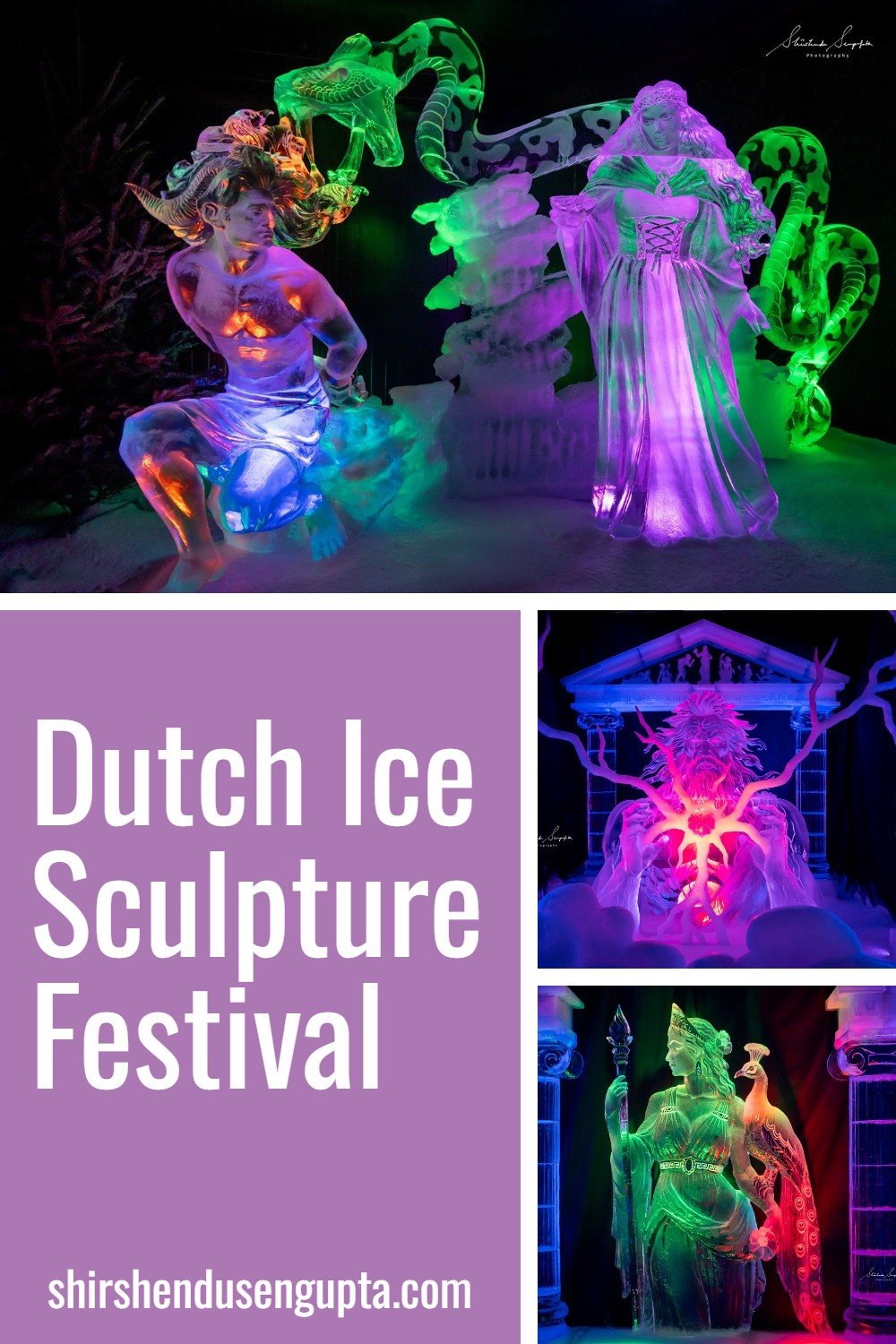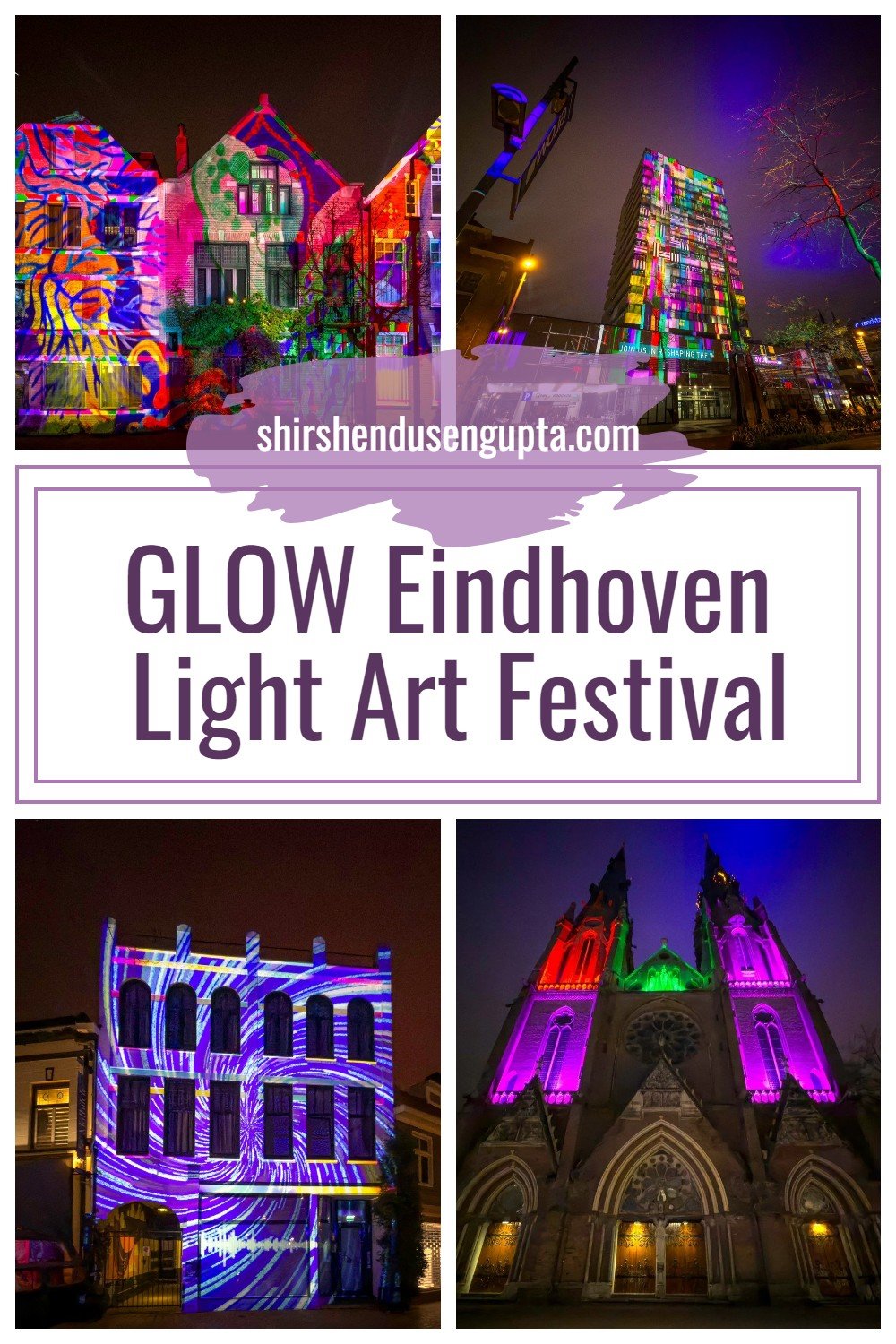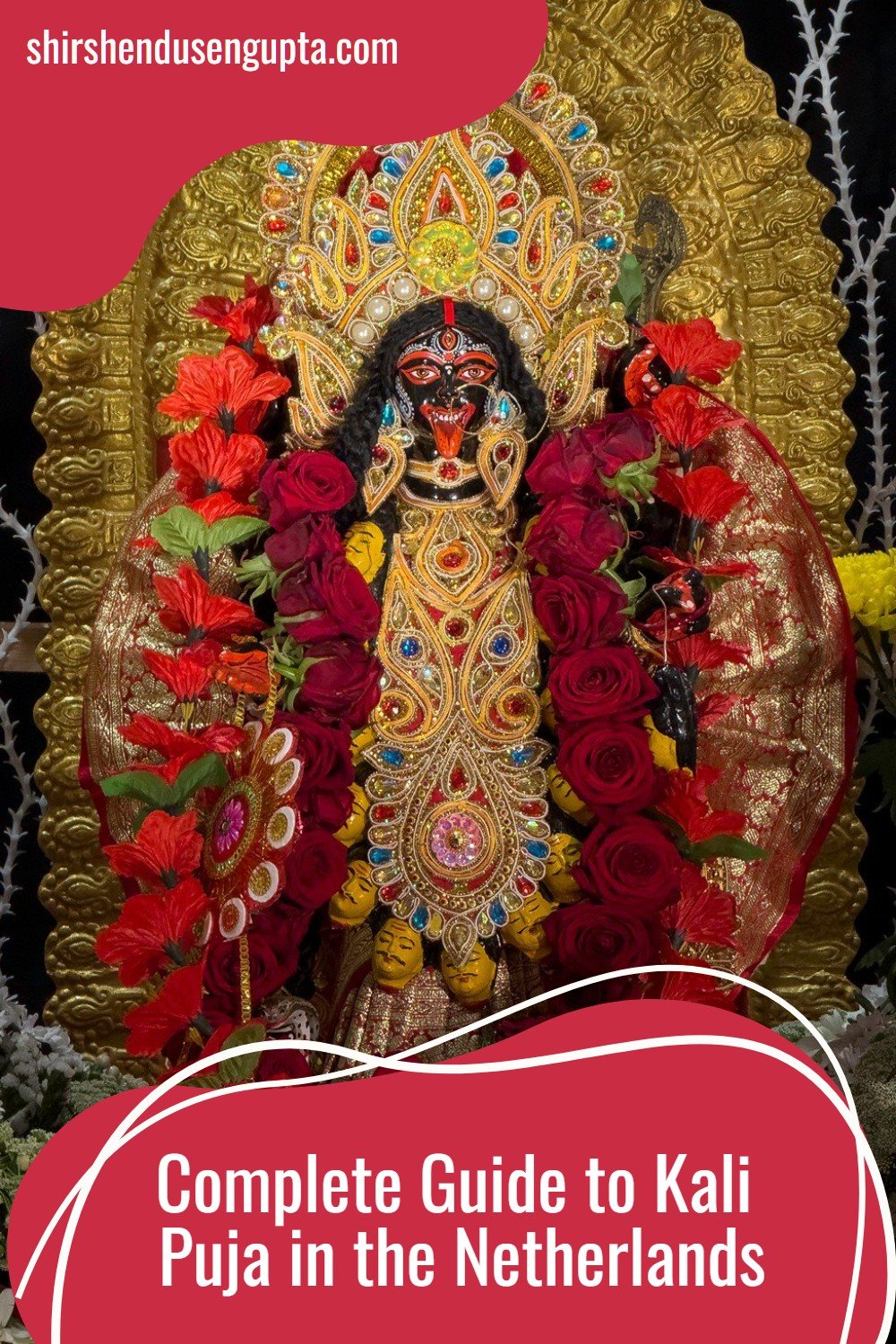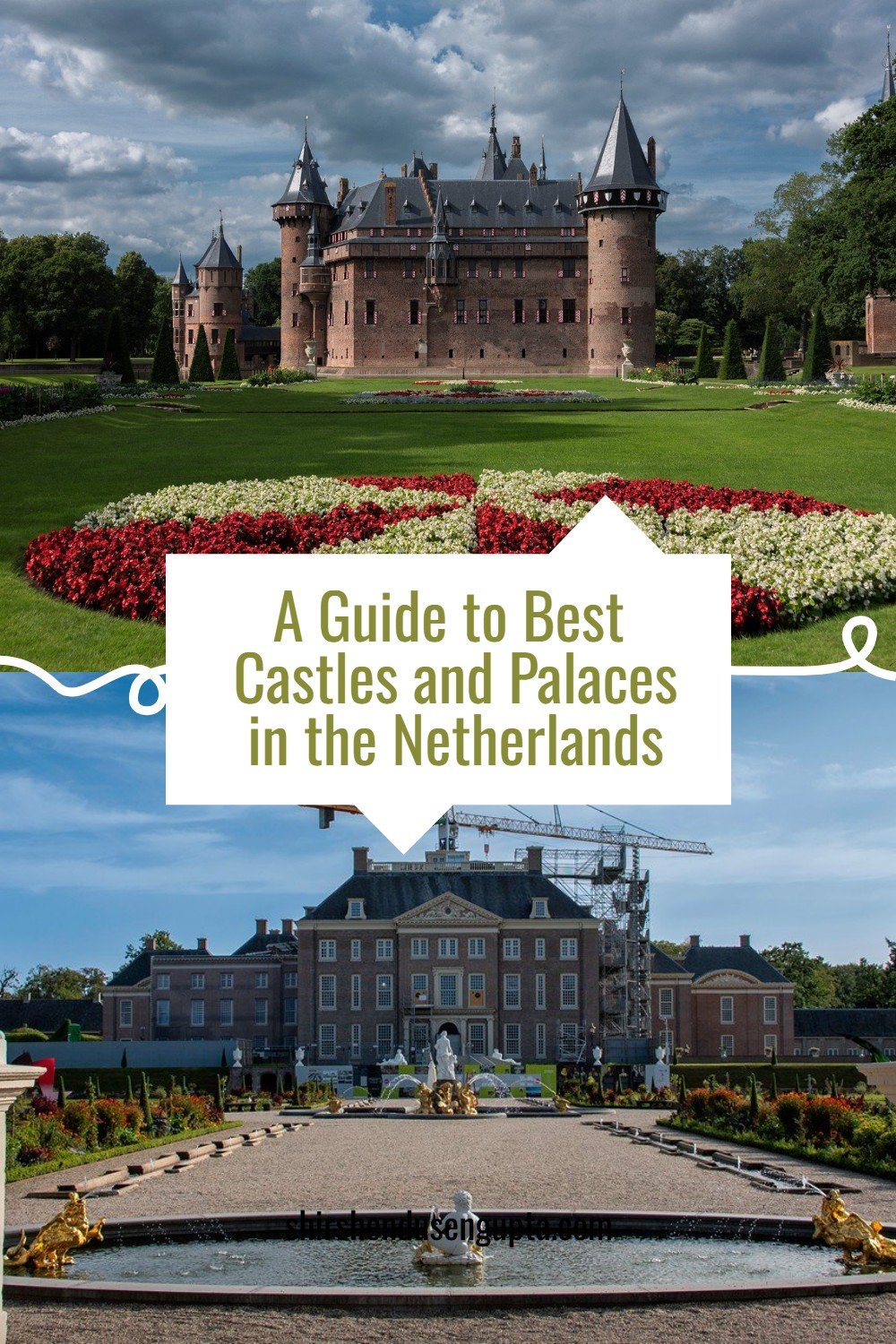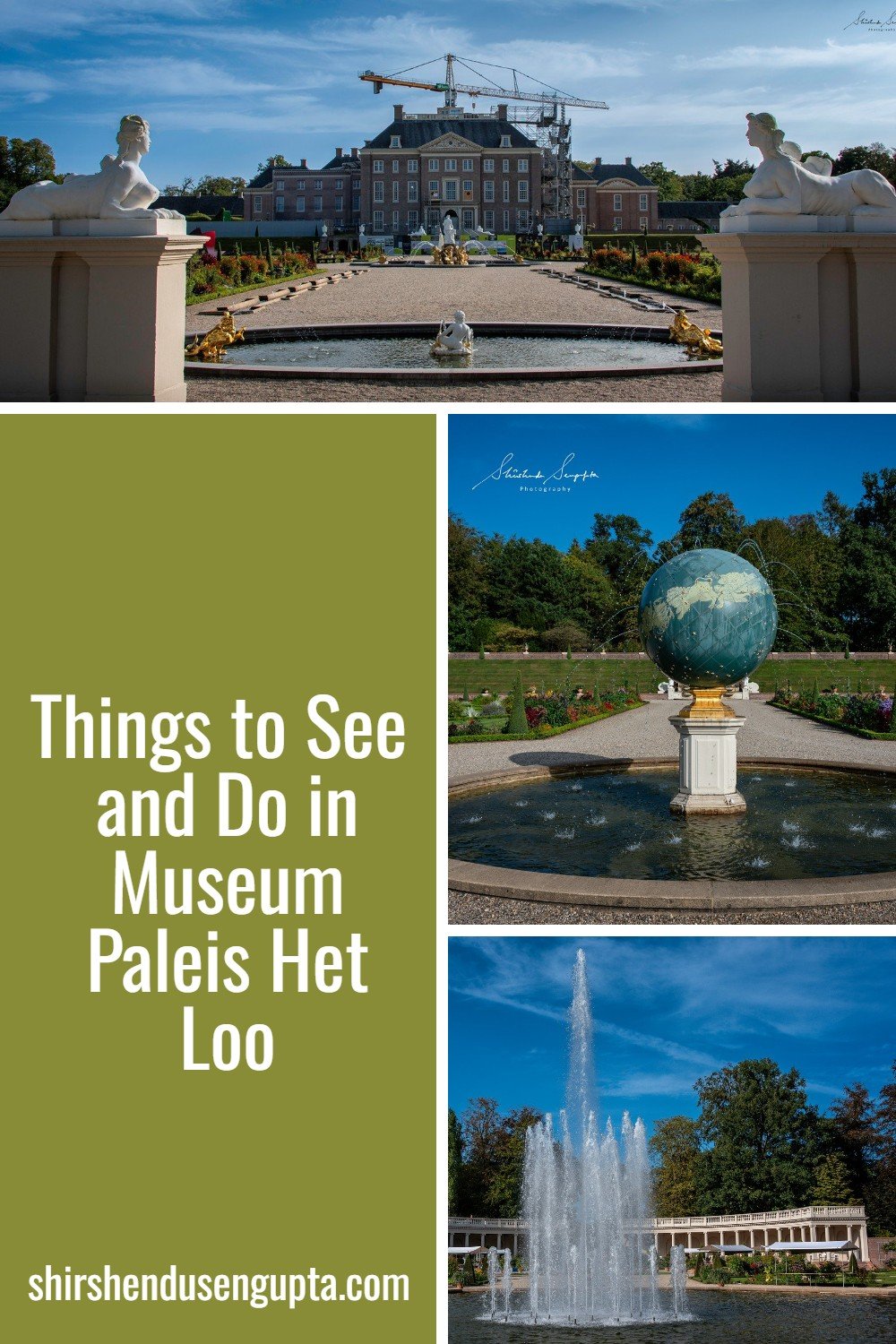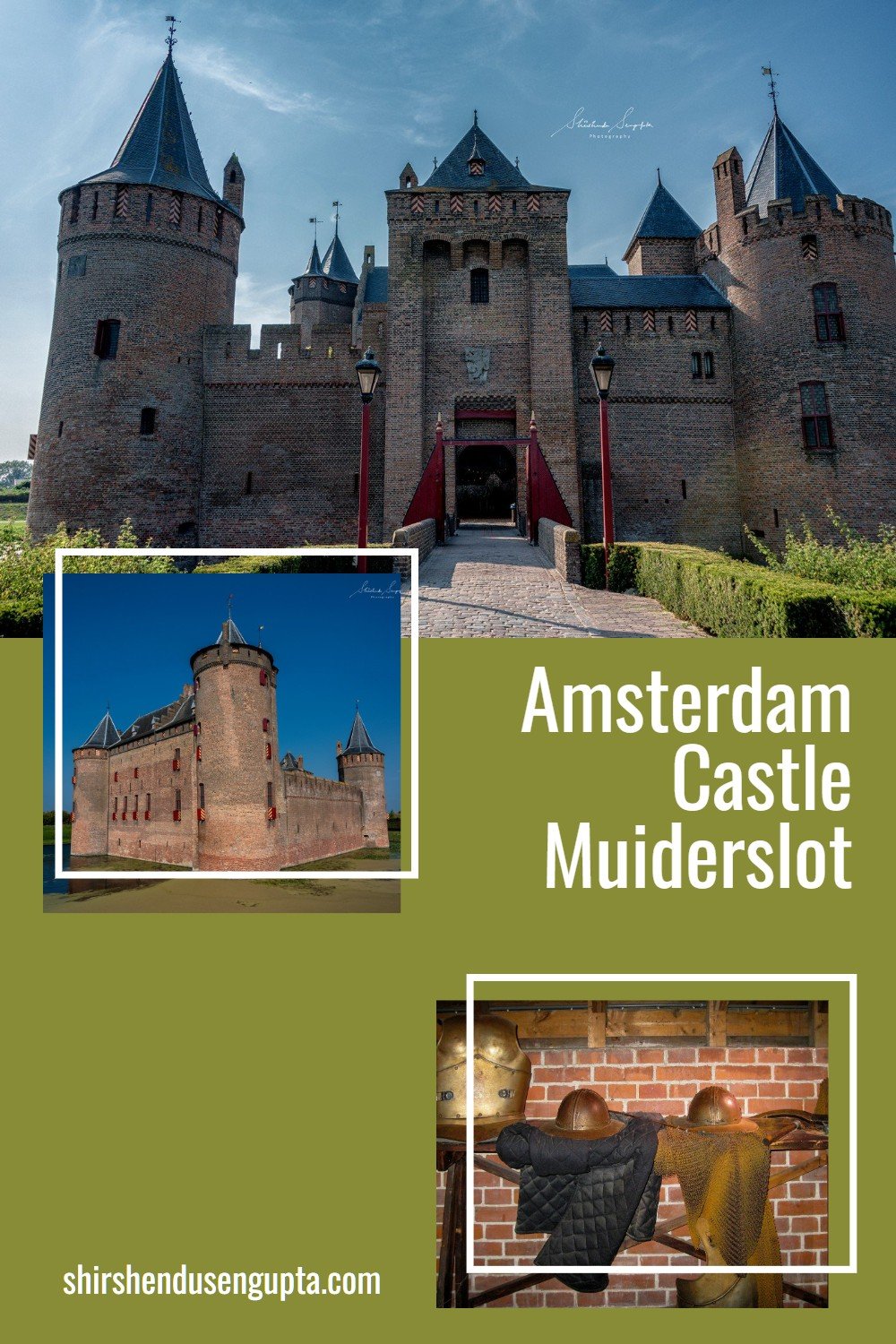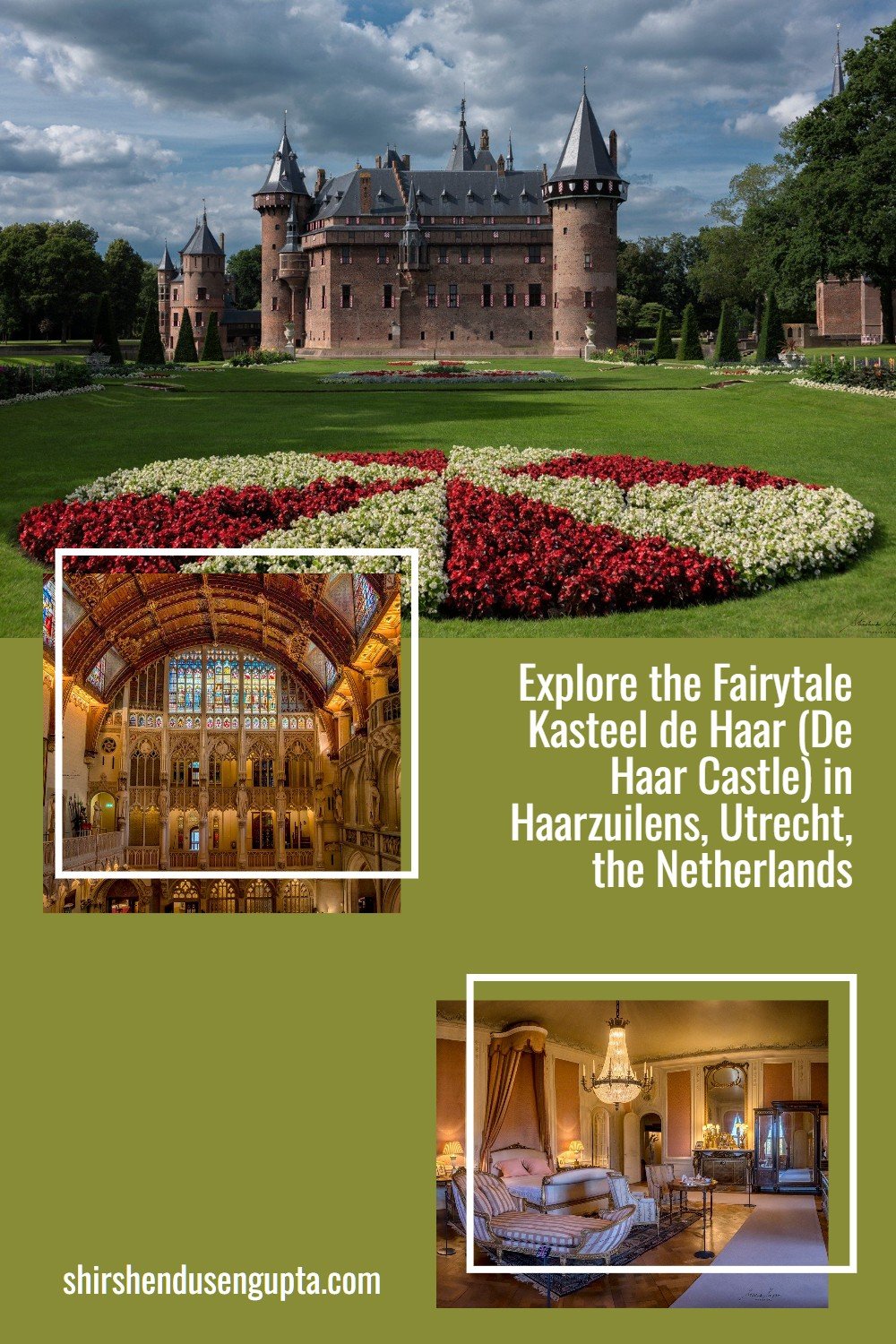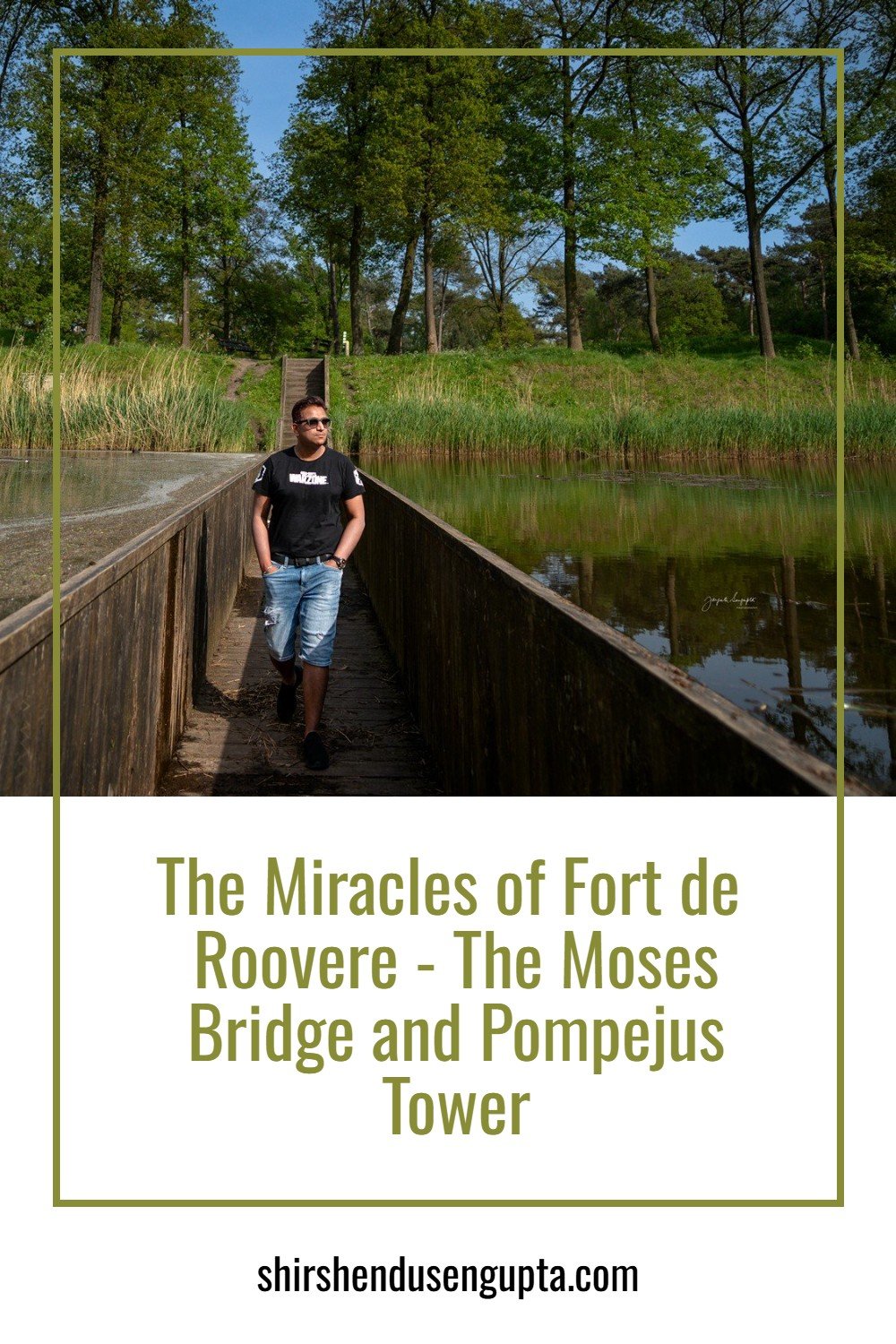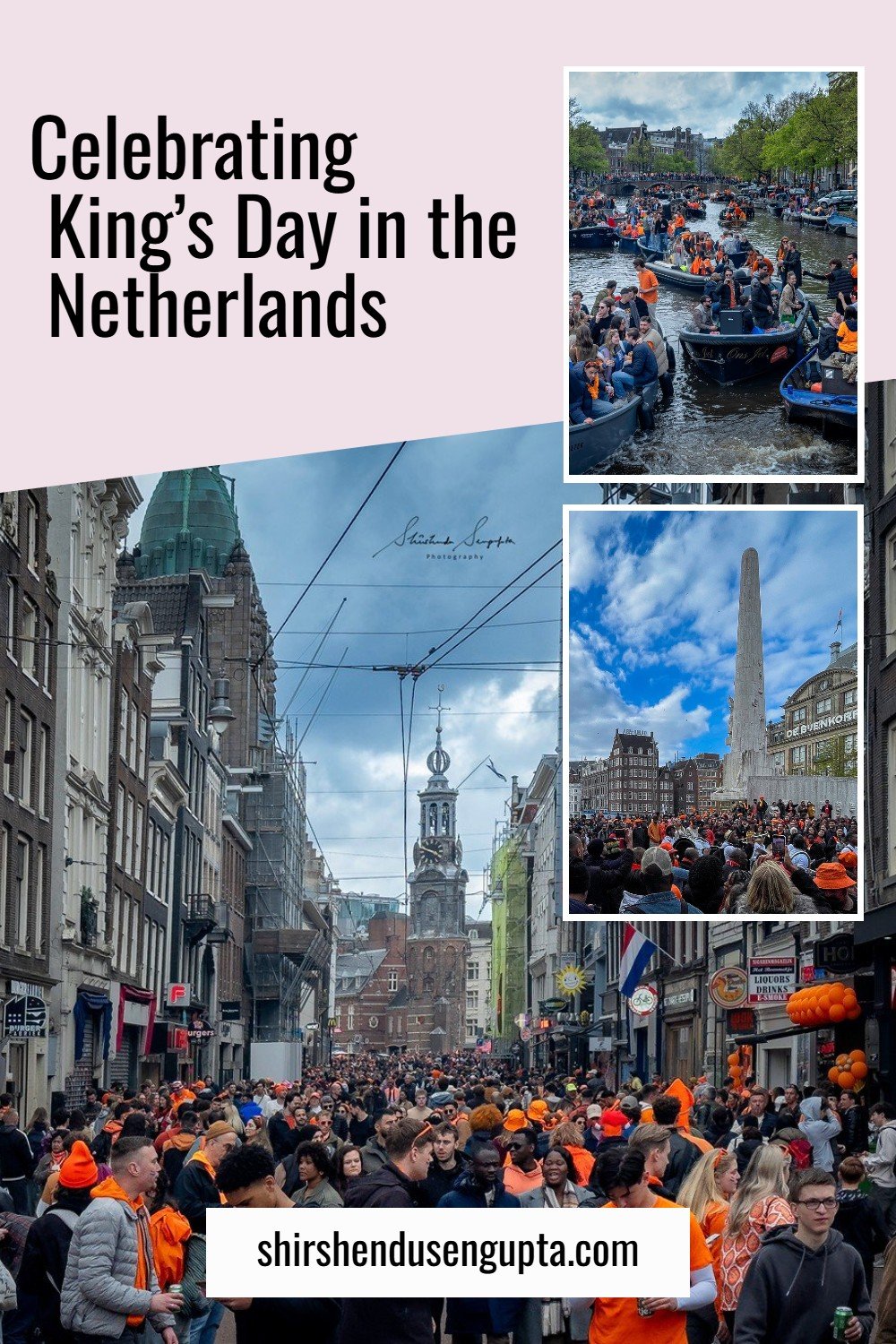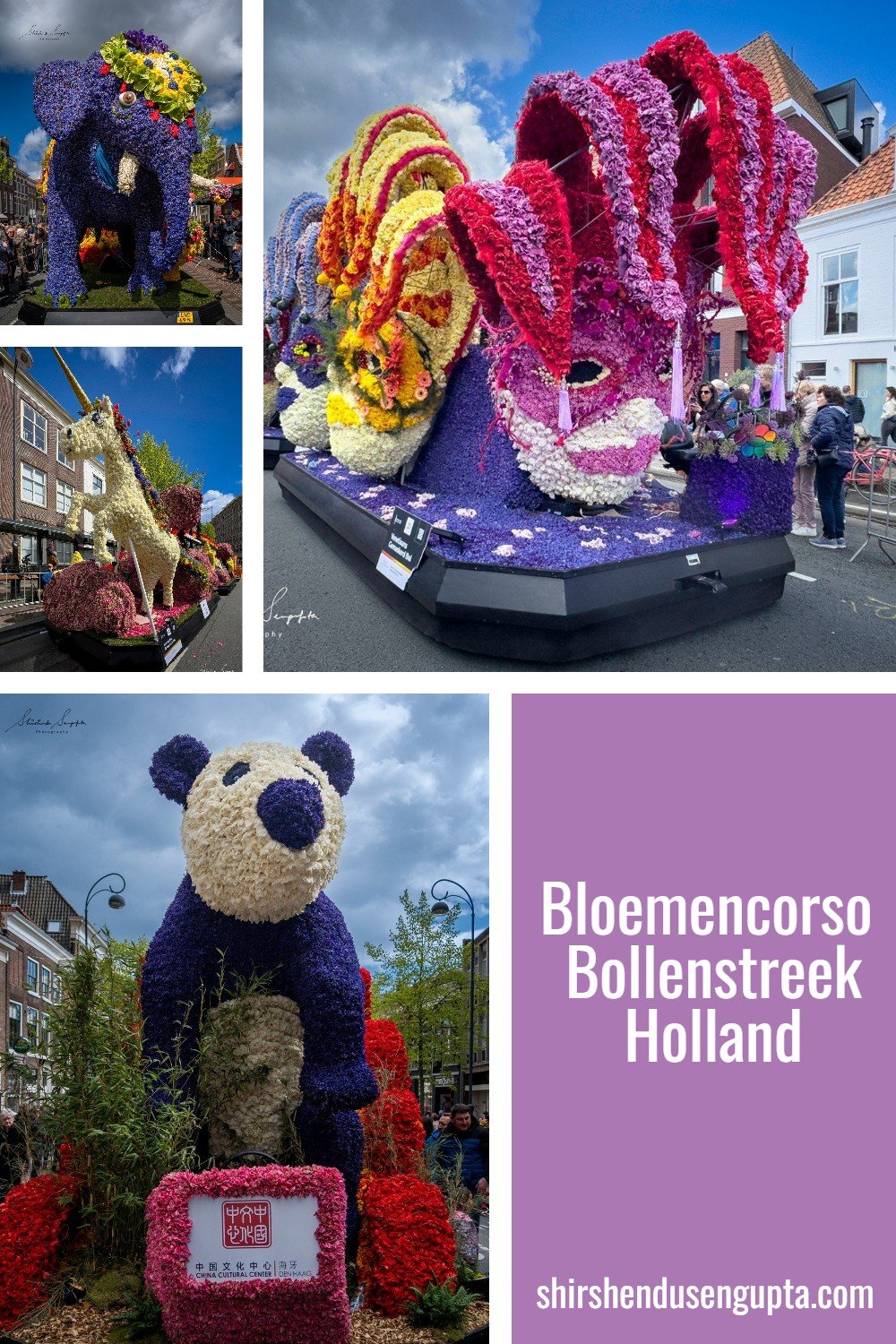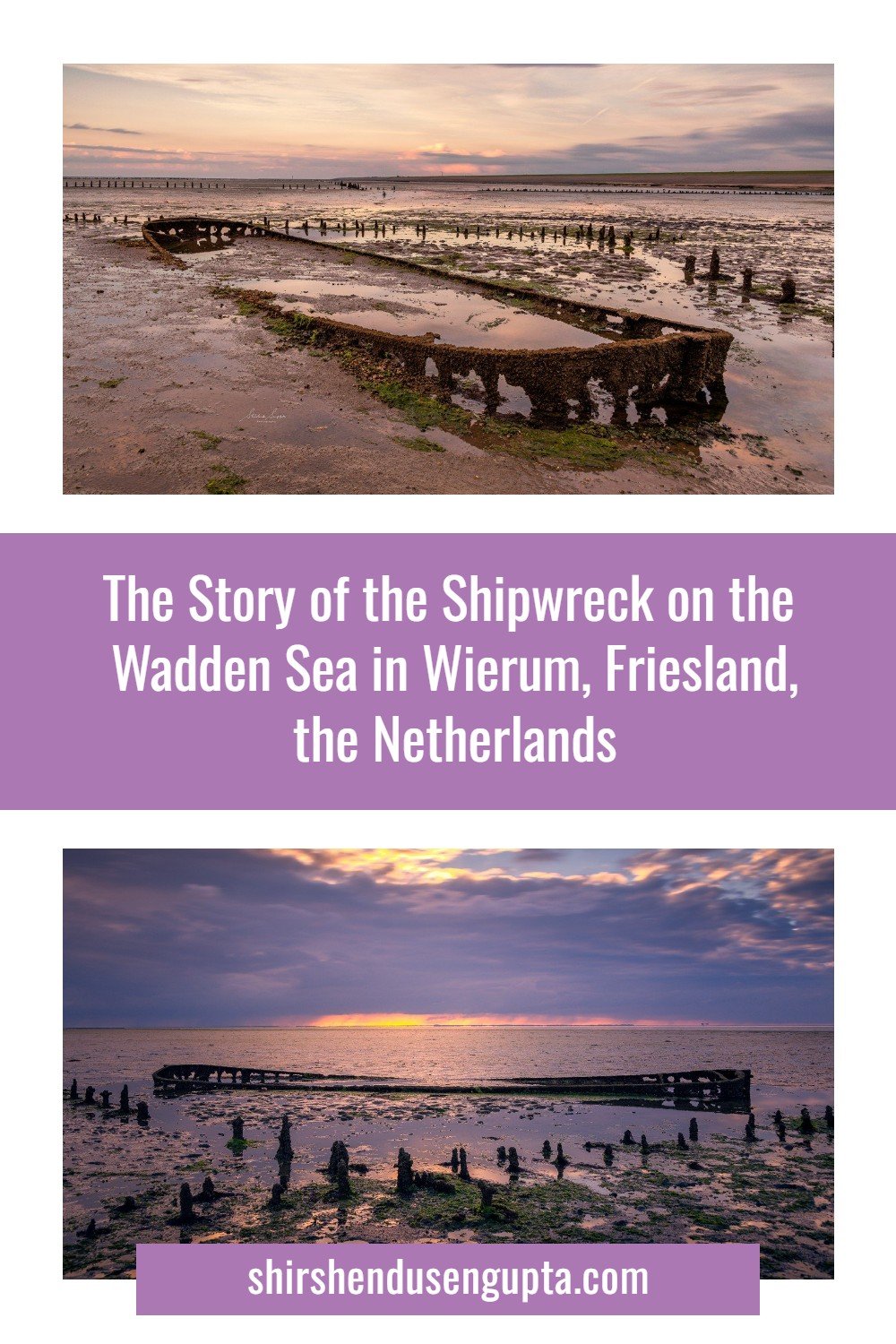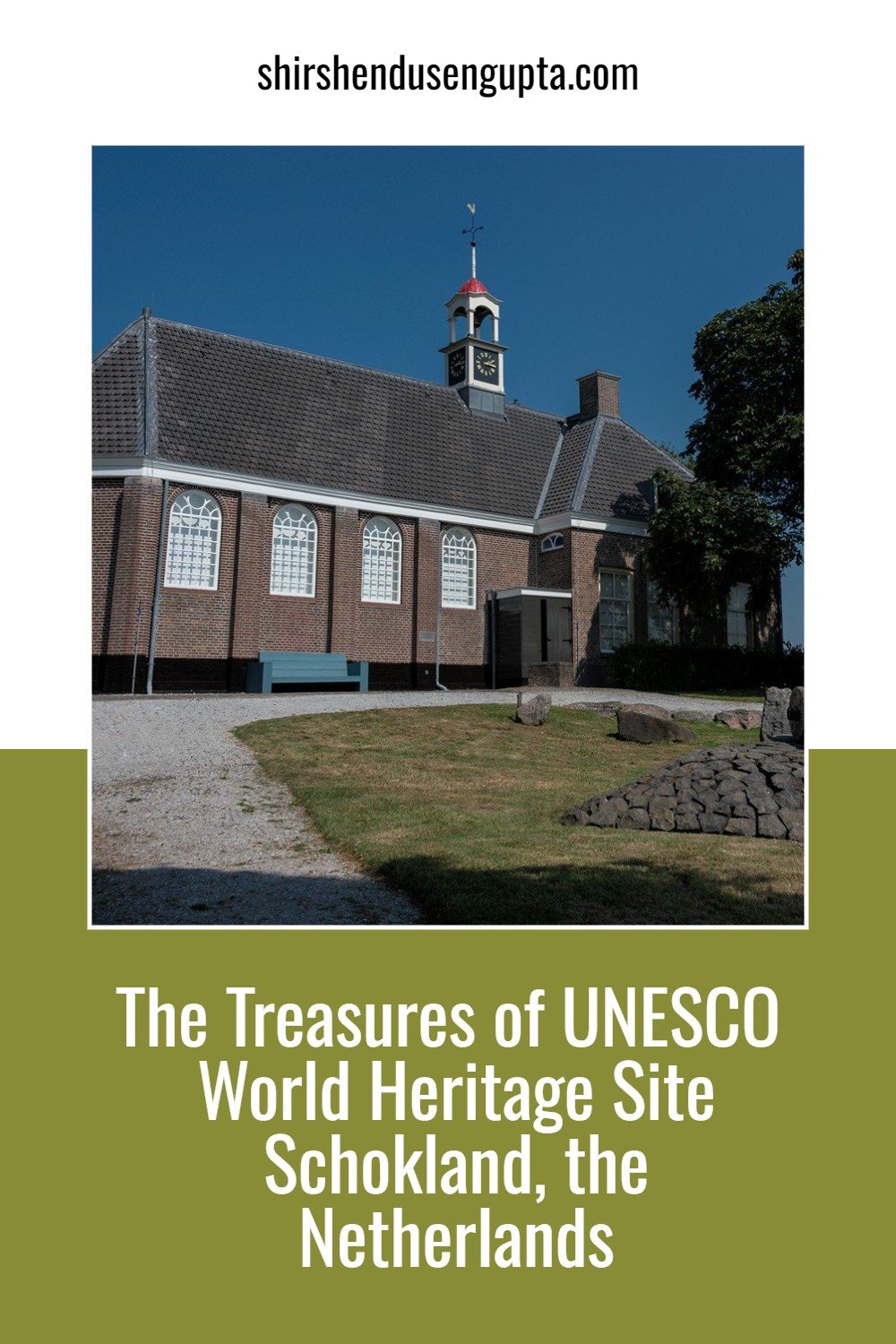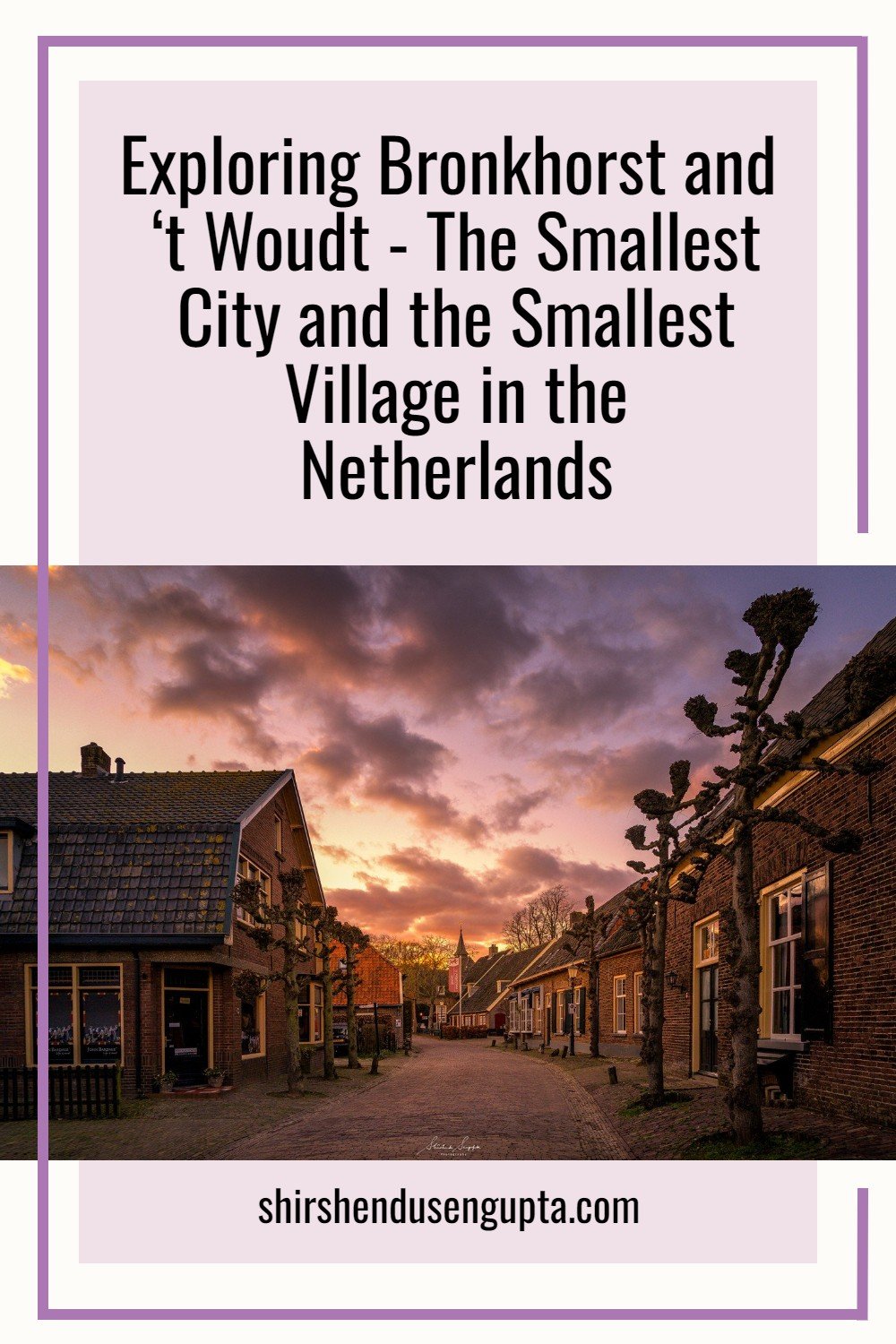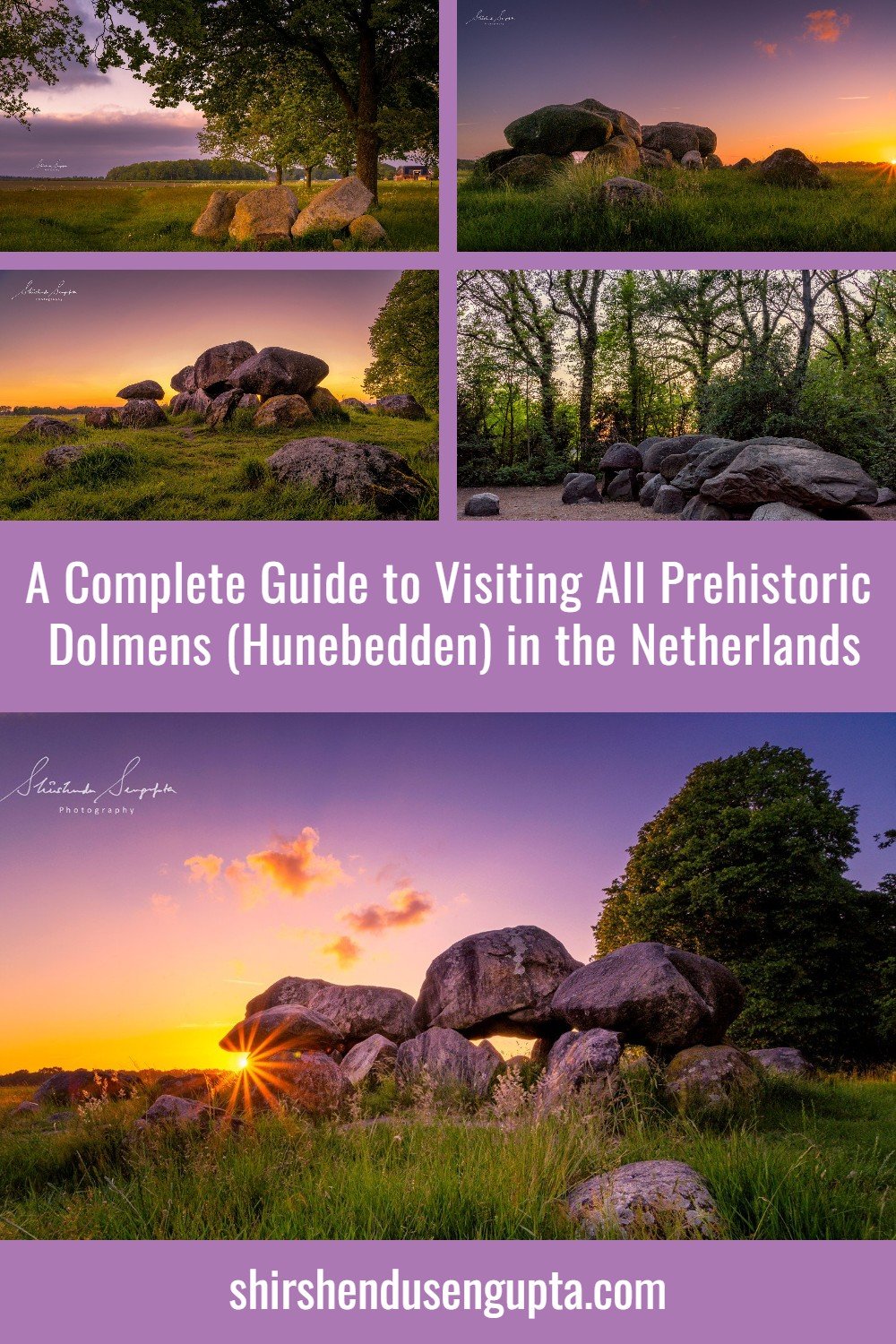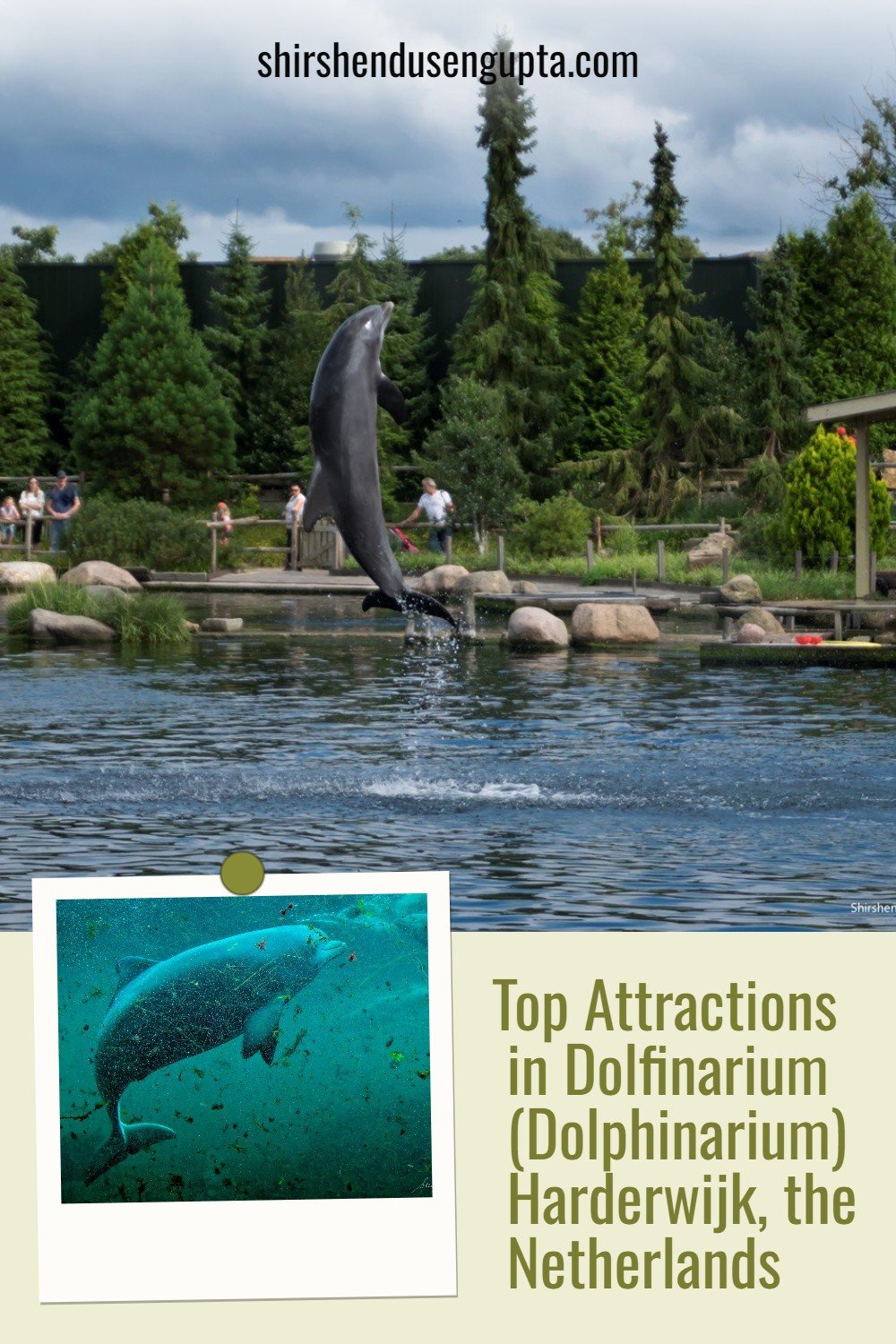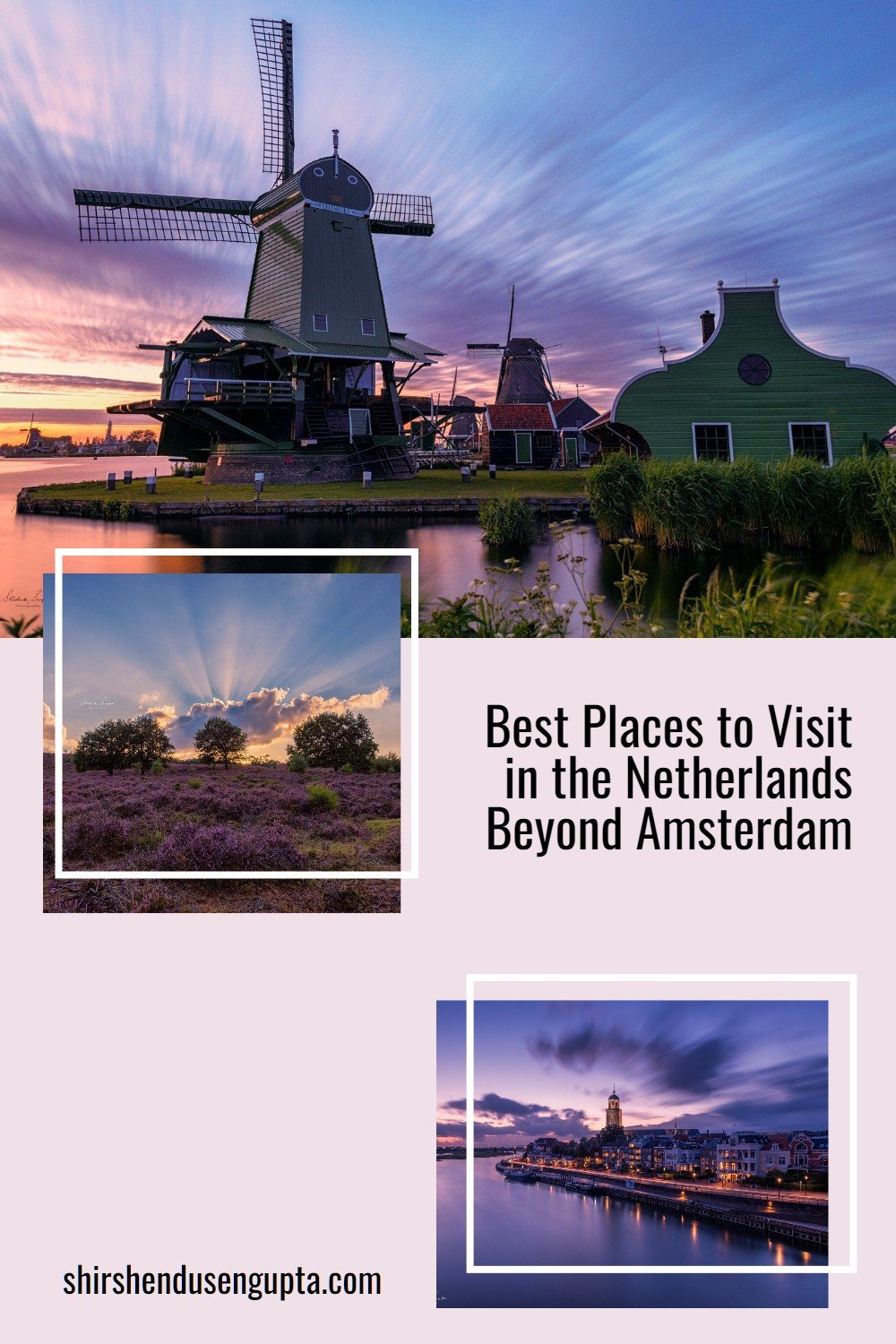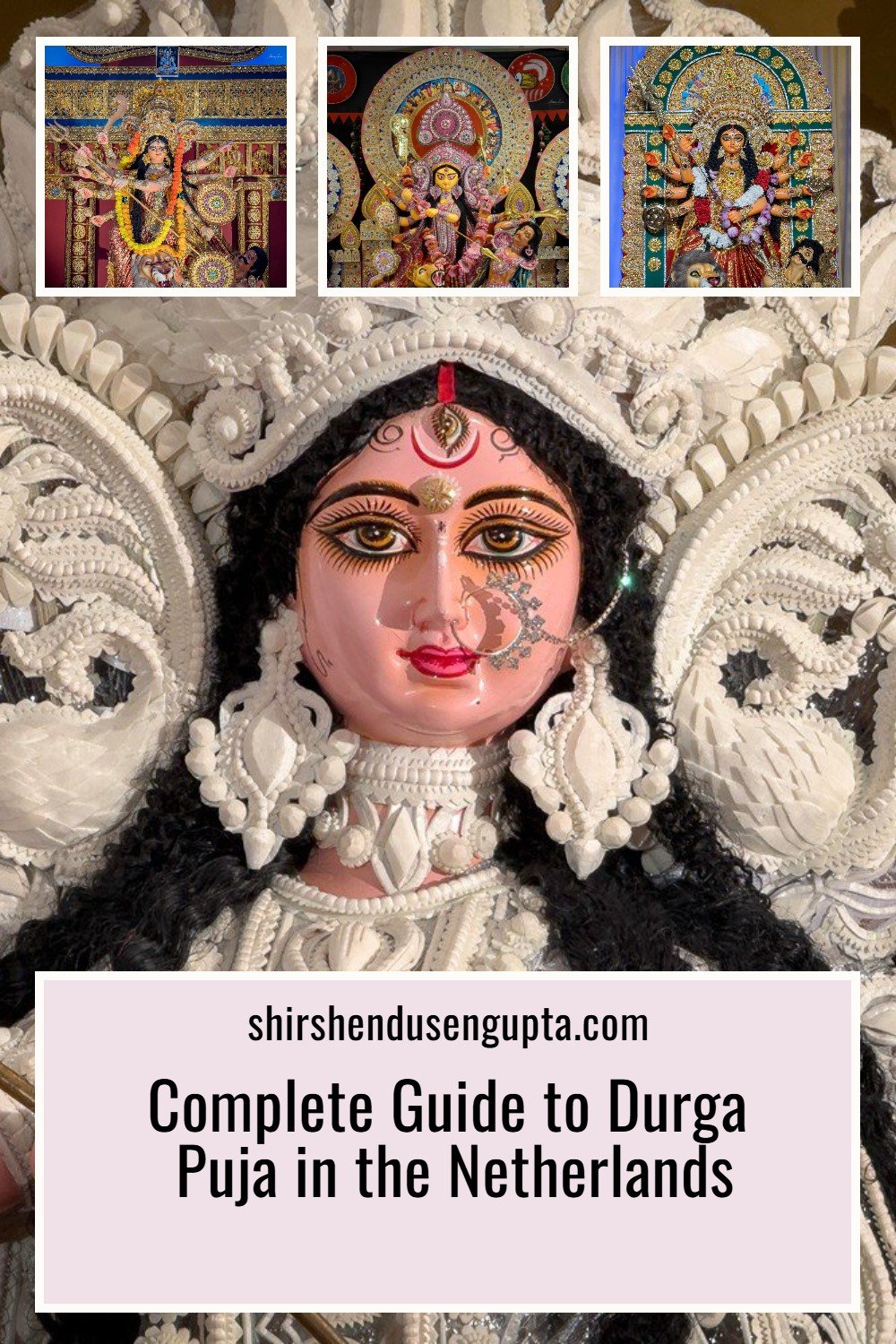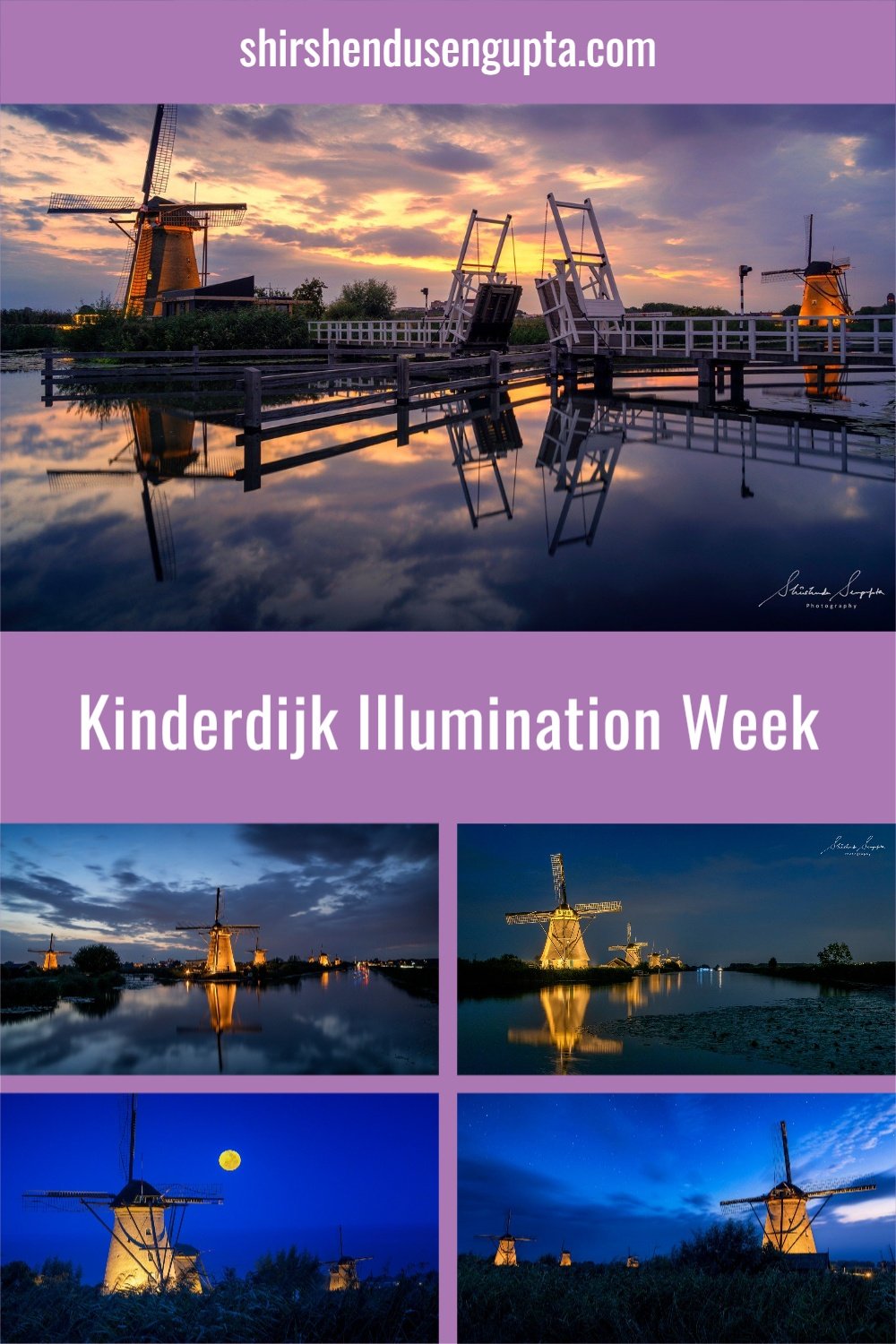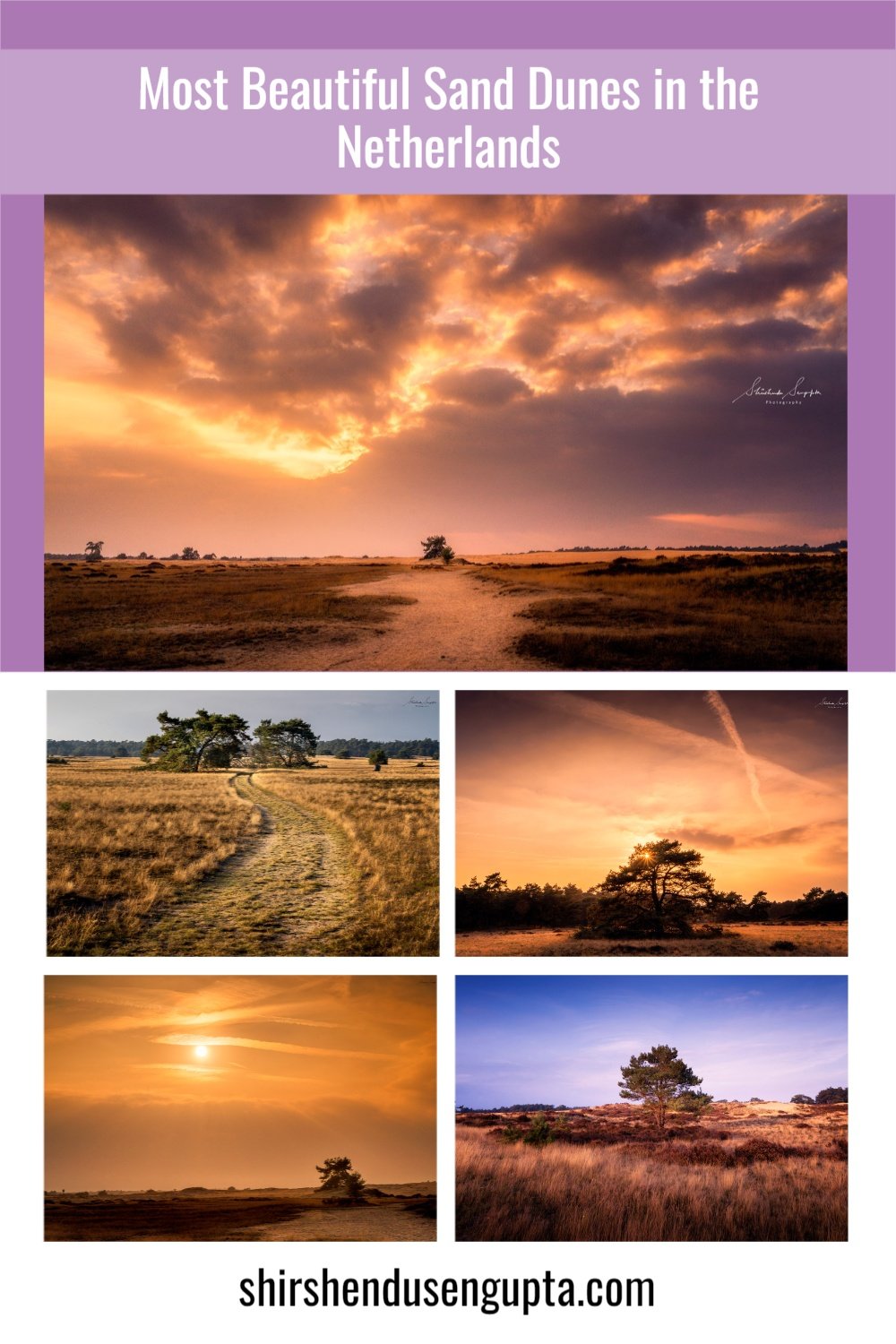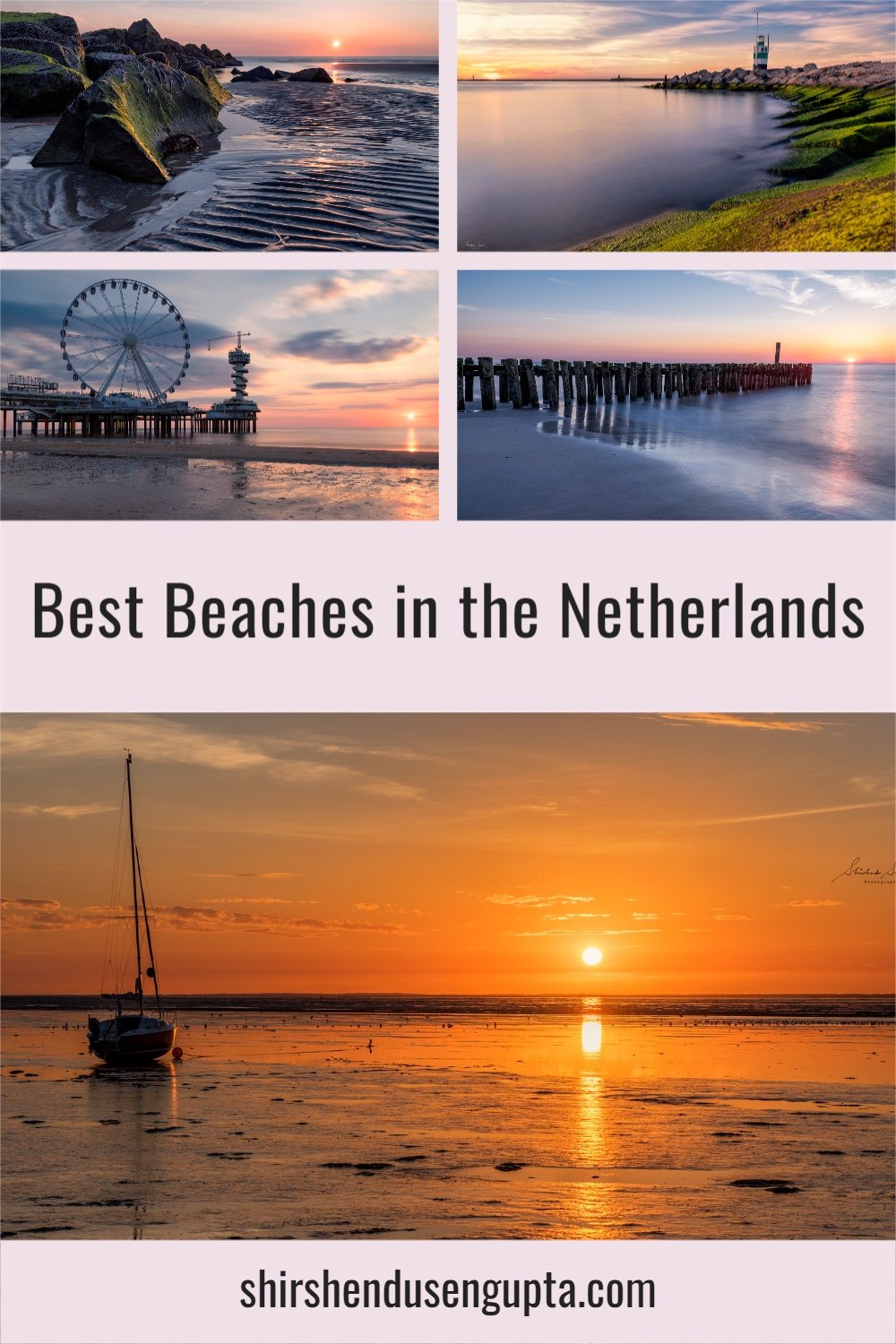Netherlands Off The Beaten Track | 43 Best Hidden Gems in the Netherlands
Prologue
Being among the most urbanized nations in the world, the Netherlands is a country where the majority of its travel destinations are well-known and easily accessible by tourists via public transport or even a bicycle. Antique works of art, centuries-old windmills, polders, wooden houses, endless ocean of vibrant flower fields, and romantic candle-lit cafes amidst modernist architecture, sophisticated design, and sensational nightlife in an otherwise flat piece of land reclaimed from the sea - the tourist brochures create a vivid image of the Netherlands in the minds of travelers.
However, the truth is that this small country has much more to offer than those popular destinations overrun by tourists. Being Dutch citizens ourselves living in the Netherlands for many years, and having traveled to 100+ cities, towns, and villages across all 12 provinces of the country, we’ve discovered many hidden treasures that are not featured in any travel brochures or websites, and many of our Dutch friends aren’t even aware of them, making them perfect for crowd-weary travelers. Based on that experience, today, I decided to share with you 43 best hidden gems in the Netherlands.
43 Best Hidden Gems in the Netherlands
1. The Purple Hills, Posbank-Veluwezoom (Gelderland)
Let’s start with one of the least known yet most heavenly locations in the Netherlands. Veluwezoom, the first National Park in the Netherlands, is a hilly terrain comprising heathlands and sand dunes. During early autumn (late August), the blooming heathers turn the place into a purple wonderland which's best viewed from the 90 m high hill of Posbank. There is a big parking lot and a restaurant at Posbank which can be very busy during a sunny autumn day.
To know more about Veluwezoom National Park and how to visit it, please read our article The Purple Hills of Posbank | The Heather Fields of Veluwezoom National Park, Hoge Veluwe, Gelderland | The Best Place to See Heather Bloom in the Netherlands.
2. Row Houses, Reitdiephaven (Groningen)
Reitdiephaven is one of the most beautiful and coziest mini marinas in the Netherlands. It is a place full of hustle and bustle with pastel-colored row houses, shops, restaurants, and supermarkets surrounding the marina. You can easily spend a relaxing afternoon with your family taking a leisurely stroll, shopping, and dining at the marina. You can also rent a boat and go sailing.
For more information please visit reitdiephaven.nl
3. Rainbow Houses, Houten (Utrecht)
On the banks of the lake Rietplas, in Houten, stands the colorful wooden rainbow houses. It’s a liberating feeling to witness a stunning sunset sipping on a glass of beer on a small island in the middle of the lake that can be accessed by a makeshift boat.
4. Horse of Marken, Marken (Noord-Holland)
Marken is a small fisherman’s village in North Holland, situated on the lake Markermeer. It never fails to charm the visitors with its canals, traditional colorful wooden houses, and drawbridges. At the end of the village, there’s a quaint lighthouse known as ‘Paard van Marken’ meaning ‘Horse of Marken’, accessible only on foot, about a half-hour walk over the dike. If you are in the vicinity of Noord-Holland, I recommend a tranquil walking experience over the dike to the lighthouse leaving the hustles and bustles of the city far behind.
To know more about Marken, please read our article Experience Waterland | 11 Most Charming and Beautiful Authentic Dutch Villages of Waterland | The Wet Back Garden of Amsterdam, the Netherlands.
5. The Dolmens, Drenthe and Groningen
Let me ask you a “Did you know?” question. Did you know that there are Stonehenges in the Netherlands? And that they are older than the English Stonehenge and the Egyptian Pyramids? And that too not just 1, but 54? If not, then you must know!
Dolmens are megalithic tombs found all over Northwestern Europe dating back between 5000 and 3000 BC in the Neolithic period (New Stone Age). Literally meaning “stone tables” (derived from the Breton words "dual" and "maen," signifying table and stone, respectively), dolmens are composed of one or more capstones covering at least three, but frequently (many) more standing supporting stones. Based on current theory, Dolmens are thought to be the remnants of ancient burial chambers. For centuries, the Dutch believed that huynen (giants) had made the hunebedden (meaning giant beds in Dutch), from where the word was derived. In reality, the dolmens of the Netherlands were built by farmers belonging to the Funnel-beaker Culture between 3350 and 3030 BC, making them older than the English Stonehenge and Egyptian pyramids. The dolmens are scattered across the provinces of Drenthe and Groningen. Drenthe has 52 dolmens and Groningen has 2 making it a total of 54 dolmens in the Netherlands.
To know more about the Dolmens and how to visit them, please read our article A Complete Guide to Visiting All 54 Prehistoric Dolmens (Hunebedden) of Drenthe and Groningen in the Netherlands | Dolmen (Hunebed) Route with Map, Information, Tips, and Tricks.
6. The Mummies, Wiuwert (Friesland)
Let me ask you another “Did you know?” question. Did you know there are Mummies in the Netherlands? That too, naturally mummified? If not, then you ought to visit this place. It’s called the Mummiekelder (Mummy Cellar) and is housed in the crypt of a small church in Wiuwert, a tiny village in the province of Friesland. Before we proceed, let me share with you the riddled story of Wiuwert's ancient mummies. It is still not scientifically proven how the bodies may be so well preserved since 1609. The crypt is a mystery and houses the secret of Wiuwert.
In 1765, carpenters accidentally found seven intact bodies in the burial vault while carving wood in the church. The shocked carpenters ran out of the Nicholas Church in panic. The remarkable thing was that the bodies still had their clothes on, and their skin looked as if they had only just been buried there. Thanks to various studies, we now know that they are natural mummies, not prepared or embalmed, but preserved due to the cellar's natural climate. During the examinations at the former University of Franeker, two of the seven mummies disintegrated. Another one got smuggled, probably to America, but proof has never been found. The remaining four are a fourteen-year-old girl who died of tuberculosis in 1610, a woman who died a quiet (old-age) death in 1618, a man who suffered a painful death from a jaw abscess, and the goldsmith Stellingwerf, who apparently died peacefully and was last buried in the basement, in 1705. The clothes have decayed, but the bodies of the remaining four people are still there. And for the goldsmith, even the eyeballs are still intact! Apart from the human mummies, a few mummified animals like a cat and a few birds were also found. They are also preserved in the crypt for viewing.
To know more about the mystery of the Mummiekelder and how to visit it, please read our article The Mummies of Wiuwert | The Mystery of the Mummiekelder (Mummy Cellar) in Friesland, the Netherlands, and if you want to explore more such hidden treasures in Friesland, please read our article Discover Friesland | 9 Best Places to Visit in Friesland, the Netherlands.
7. The Shipwreck, Wierum (Friesland)
Near the village of Wierum is an old shipwreck from the second world war times that emerges from the sea only during low tides. This wreck symbolizes a crucial part of the Wadden Sea's cultural history - the struggle for territory between man and nature that occurred here from the Middle Ages to the present. It first appeared close to the Schoorsterhoofd, in the west but eventually started to wander towards Wierum and ended up becoming trapped in the mud. Ever since it’s been here getting gradually affected by the ebb and flow gradually but steadily affecting the praam.
To know more about the shipwreck near Wierum and how to visit it, please read our article The Story of the Shipwreck on the Wadden Sea in Wierum, Friesland, the Netherlands.
8. The Dutch Kremlin, Winkel (Noord-Holland)
Let me ask you another “Did you know?” question. Did you know there is a ‘Kremlin’ in the Netherlands? If not, then you ought to visit this place.
Inspired by Classical and Greek mythology, Biblical parables, Italian, Russian, and Eastern Orthodox architecture and powered by imagination, craftsmanship, and technical skills, Ger Leegwater, a retired steel sheet employee, single-handedly constructed this remarkable ensemble of buildings and sculptures in his private sculpture garden in Winkel, a small village in the Dutch province of North Holland. Started in 1980, the work demanded relentless effort, passion, and perseverance over 40 long years to finally establish this vibrant art exhibition.
To know more about the Dutch Kremlin and how to visit it, please read our article Kunsttuin Nederlands Kremlin | The Dutch Kremlin | A Unique Sculpture Garden by Ger Leegwater in Winkel, the Netherlands.
9. The Pyramid of Austerlitz, Woudenberg (Utrecht)
In 1795, the French stationed an army in the Netherlands. In 1804, General Marmont was appointed the commander of both the Batavian and the French troops. To unify them, Marmont decided to make them exercise together on the heathland between Woudenberg and Zeist. A huge encampment was created to accommodate the troops and many citizens, who were hired to take care of the massive army, which consisted of more than 18,000 men. The shelters of the latter were the start of the current village of Austerlitz. Soon, Marmont's army became a well-oiled war machine and because the late summer of 1804 was beautiful, Marmont decided that he and his soldiers could stay awhile before returning to their winter quarters. This did mean, however, that his troops had to have something to do. So Marmont ordered them to build a pyramid of sand and turf cut from the heath. Six years before, Marmont had accompanied Napolean on a military campaign to Egypt, where he had seen the mighty pyramids of the pharaohs. He was keen to leave the world something equally grand. After 27 days of working with military precision, a structure had been erected on one of the highest points in the Utrecht Hills. On top, a wooden obelisk was built, and a lead tube with a number of documents in it had been buried in it. There is no pyramid with an obelisk on top anywhere in the world.
The Pyramid's festive opening was held on October 12, 1804. It goes without saying that Marmont hoped that it would always carry his name for all eternity, but unfortunately for him, King Louis Bonaparte rechristened it 'Pyramide van Austerlitz' a mere two years later to honor Napoleon's victory over the Austrian and Russian armies at Austerlitz (now Slavkov in the Czech Republic) in 1805.
To know more about the Pyramid of Austerlitz and how to visit it, please read our article Monument De Pyramide van Austerlitz | The Dutch Pyramid of Austerlitz located in Woudenberg (Utrecht), the Netherlands.
10. Museum Schokland, Schokland (Flevoland)
12,000 years ago, there lived a group of hunter-gatherers and fishermen on a small island called Schokland in the middle of the stormy Zuiderzee, which continuously kept claiming its lands. As the Middle Ages (500-1500 AD) arrived, only farmers were left on the island who reared cattle and grew crops. From the 12th century, they started living on the man-made mounds (terpen) - Zuidpunt, Zuidert, Middelbuurt, and Emmeloord, which were the only safe places during the high tides and storms. By the 17th century, agriculture had declined because of the loss of land to the sea and trade, shipping and, above all, fishing became more and more important. In 1859, the islanders finally lost their battle against the water and 635 'Schokkers' moved to the mainland. In 1942, following the recovery of the Noordoostpolder from the sea, it ended up being an island on dry land.
This is how a unique location came into being; the UNESCO World Heritage Site of Schokland. Schokland's archaeological treasures have thankfully been well maintained. It was possible to recover many remains in the ground from the farmers and hunter-gatherers who lived there 10,000 years back. Apart from that, in the Schokland Museum, one can find a scale that shows the level of water when the land was under the sea. To me, if you are interested in the history of the Netherlands and the eternal battle of the Dutch against the water, you must visit this place.
To know more about Museum Schokland, please read our article The Treasures of UNESCO World Heritage Site Schokland, the Netherlands | UNESCO Werelderfgoed Schokland, Holland | Museum Schokland.
11. Netherlands American Cemetery, Margraten (Limburg)
In the Netherlands American Cemetery located in Margraten in the southern province of Limburg, 8,301 American soldiers from the U.S. 30th Infantry Division are laid to rest here. They were martyred while liberating this site from the Germans on 13th September 1944. Since 1945, the Dutch locals bring flowers to the cemetery to honor the sacrifice of their liberators.
To know more about Netherlands American Cemetery and how to visit it, please read our article Remembering the Fallen | 3 Historic World War II Memorials and Cemeteries in the Netherlands.
12. Waal Crossing Memorial and Oversteek Bridge, Nijmegen (Gelderland)
On 20 September 1944, American paratroopers crossed the Waal river in Nijmegen in 26 small boats rowing with rifle butts in the absence of proper oars to recapture the two bridges over the Waal river in Nijmegen. Named in history as Operation Market Garden, it was a 4-hour battle that resulted in recapturing of the two bridges by the paratroopers, thereby leading to the liberation of Nijmegen with half of the 260 US soldiers injured or martyred. Forty years later, the 'Waal Memorial' was erected to honor the soldiers who fell throughout the Waal crossing.
In 2013 the Oversteek (meaning The Crossing) bridge over the Waal was inaugurated by the last enduring veterans of the attack, and Mrs. Barbara Gavin, the oldest child of General James Gavin, the 'liberator' of Nijmegen to immortalize Nijmegen's brave crossing in 1944. To know more about Waal Crossing Memorial and how to visit it, please read our article Remembering the Fallen | 3 Historic World War II Memorials and Cemeteries in the Netherlands.
13. National Holocaust Names Monument, Amsterdam (Noord-Holland)
The National Holocaust Memorial of Names, located on Weesperstraat street near the Jewish Cultural Quarter of Amsterdam, was designed by Polish-American architect Daniel Libeskind's studio in collaboration with local studio Rijnboutt to honor the 102,000 Dutch Holocaust victims. The victims, most of whom were Jews, Sinti, and Roma, were murdered by the Nazis during WWII and have no known graves. More than 75 years after World War II, the National Holocaust Memorial of Names, which is the first memorial to honor and memorialize these victims, was unveiled on September 19, 2021, by the Dutch Auschwitz Committee and the King of the Netherlands.
The memorial walls are made up of 102,000 bricks with the names of the dead engraved on them organized in a series of two-meter-high walls that are topped by four mirrored stainless steel volumes. The placement of the brick walls by Studio Libeskind creates a dynamic labyrinth of pathways for visitors to explore. Studio Libeskind created the mirrored volumes to resemble four Hebrew letters that, when viewed together from above, form a word that translates as “in memory of,” giving the project its name. Along with these bricks, 1,000 more were left blank to honor those who are still unknown.
To know more about National Holocaust Names Monument and how to visit it, please read our article Remembering the Fallen | 3 Historic World War II Memorials and Cemeteries in the Netherlands.
14. Radio Station, Kootwijk (Gelderland)
The colossal former broadcasting station Radio Kootwijk is situated in the Veluwe's heart, where the trees made way for an open area of heathland and sand shifts. A winding path through the forests leads via the small village of the same name to this imposing building, a historical example of technical developments in the 20th century. The transmission equipment for communication with the Dutch colonies overseas, especially the Dutch East Indies, was housed here since 1918. In 1923, the PTT started using the radiotelegraphic transmission station for the trans-oceanic longwave telegraphy. Soon after, the switch was made to short-wave transmission.
It is possible to book a guided tour to learn about the architecture, technology, fascinating history and life in the village of Radio Kootwijk. For more details visit hierradiokootwijk.nl
15. Inntel Hotels, Zaandam (Noord-Holland)
The first sight that hits your eyes as soon as you come out of the train station in Zaandam is a colossal 12-story pileup of traditional green and blue Dutch houses balancing on top of each other. No doubt, this offbeat piece of architecture adds to the quirky skyline of Zaandam.
16. Cube Houses, Rotterdam (Zuid-Holland)
Rotterdam was brought to the ground during the Second World War. During the restoration, the city planners chose to rebuild the city with contemporary architecture instead of fixing the old structures. And one of the most iconic among them is the Cube Houses. The Cube Houses (Kubuswoningen) in Rotterdam are among the city's most renowned destinations. Developed by Dutch designer Piet Blom in the late 70s, these 45 degrees inclined cubes are actually residential apartments.
To know more about these apartments, you can visit the Show Cube Museum (Kijk-Kubus). For more information on the prices, please visit kubuswoning.nl
17. Ball Houses, Den Bosch (Noord-Brabant)
Straight out of the scene from an alien science fiction movie, the Bolwoningen (Ball Houses) in Den Bosch results from the Dutch Government's initiative to build low-priced housing in 1968. The designer, Dris Kreikampa's model, was selected to design a community of 50 sphere homes. Residents didn't value the vision of the designer. However, today, many travelers would enjoy checking out or perhaps experience residing in these futuristic homes.
The Bolwoningen are made from cement, strengthened with fiberglass. Each condo consists of 3 floors, with bedrooms on the ground level, a restroom concealed on the middle level, and a living room with a compact kitchen area in the upper level with a maximum diameter of 18 feet (5.5 meters), producing a cozy living space. The Ball Houses can be entirely dismantled and transferred to any other location (this structure's weight is just about 2755 pounds). Besides, this structure can be positioned not only on the ground, however likewise on water, on a fixed platform.
18. De Terp van Leidschenveen, Den Haag (Zuid-Holland)
High on a green mound (‘terp’ in Dutch), sandwiched between the hustles and bustles of a highway, a railway, and a new neighborhood, stands a small, austere white chapel as a beacon in the landscape. The clock in the tower echoes the time in its own way, creating a serene ambiance amidst busy city life. The mound that the church stands on was formerly a garbage mound that now partly serves as a noise barrier. In this way, art, architecture, science, and landscape were merged together by Dutch engineering.
The building attracts your attention and, at the same time, illudes you. The dimensions of the chapel have been chosen in such a way that it initially resembles a regular simple church. Since there are no references, no bench, lamppost, or tree, only a high mound covered with clipped grass, you can't realize the true size of the structure. This is further enhanced by the wide pyramidal shape of the mound, which increases the perspective effect. It is only when one approaches the structure closer that it becomes clear that the image you expect has shrunk. However, the artwork is more than just an optical trick. The white building is abstracted of religious elements or symbols and therefore is technically not a ‘church’ but a secular icon!
To know more about De Terp van Leidschenveen and how to visit it, please read our article The Little White Church on the Hill | De Terp van Leidschenveen, Den Haag | The Mound of Leidschenveen, a Unique Outdoor Art in The Hague, the Netherlands.
19. The Church Ruins, Bergen and Oude Niedorp (Noord-Holland)
The Ruïnekerk (Church Ruins) of Bergen, North-Holland, is a 15th-century church burned down during the Eighty Years' War, but the ruin was subsequently partly rebuilt. The church has the status of a national monument. Today it is used by the Protestants for weekly church services. Weddings and classical music concerts are also held here.
The church ruins of the tiny village of Oude Niedorp (with a population of just 420 residents) is the ruin of the former, originally 13th-century Dutch Reformed Church of the Holy Werenfridus, rebuilt in the 14th century. On April 3, 1977, the church caught fire due to lightning strikes. The church walls that are now visible were built in 1648.
20. ‘Waanders in de Broeren’ Church Bookstore, Zwolle (Overijssel)
Bibliophiles will agree that there's no better location for a bookstore than in a historical, Gothic church! Waanders in de Broeren is a beautiful bookstore in Zwolle, housed in a 15th-century church named Broerenkerk or Brother Church, in the city of Zwolle, province of Overijssel.
The Dominican brothers founded the church in 1465, but it was closed in 1580 due to iconoclasm, and the Dominicans were driven out. From 1640 the church was used by the Protestants and later, around 1760, by the Jews as a synagogue. The municipality of Zwolle took over Broerenkerk in 1983 and restored the church. Later, the bookstore Waanders operating in Zwolle for over a century took over the building, transformed it into a modern book shop, and opened the church's doors to the public again on 13th July 2013. Waanders in de Broeren bookstore now has a massive 1000 m² retail space, a restaurant on the ground floor, and a reading corner on the top floor. On the building's left side is the original organ built by the Zwolle organ builder, J.C. Scheuer and on the right side, a new colorful stained glass artwork inspired by the church's interior has been installed.
21. Steam Tram Museum, Hoorn (Noord-Holland)
The Steam tram Hoorn-Medemblik Museum has a lot to offer to its visitors. From knowing about the fascinating Dutch steam tram history to visiting the historic coaches in the warehouses to embarking on a journey back in time among the 'historic triangle' of Hoorn, Medemblik, and Enkhuizen, partly in an iconic steam tram coach, and partly in a heritage steamer named 'Friesland.'
For more information on ticket prices and opening hours, please visit stoomtram.nl
22. The White Village, Thorn (Limburg)
Thorn was established as an abbey for noblewomen around 990 AD. In the late 18th century, as Thorn fell to the French and the noblewomen fled the town, many poor people migrated to the city. The French had a strange method of calculating taxes based on the size of the windows. To evade higher taxes, the poor residents made their windows smaller by bricking them and painting the house white to conceal the distinction between the new and the old bricks. Today, the city is known for this ‘White Village’, which was once a symbol of desperation.
To know more about the White Village of Thorn and how to visit it, please read our article The White Village of Thorn | 7 Best Things to See and Do in the White Town of Thorn in Limburg, the Netherlands.
23. Zuidpier (South Pier) Lighthouse, Ijmuiden (Noord-Holland)
IJmuiden is a small harbor town in the province of Noord-Holland. During the low tide, the mossy rocks emerge from the water, which is a spectacular view to behold, especially during sunsets. To get absorbed in the beauty of the scene during a serene sunset, check tide timings to know which day the low tide coincides with the sunset before you travel.
24. Noorderpier (North Pier), Hook of Holland (Zuid-Holland)
Hoek van Holland (Hook of Holland) is a lovely coastal town in Zuid-Holland known for its beautiful beach bustling with beach clubs, bars, restaurants, and fantastic nightlife. You can enjoy an astounding view of the setting sun from the 4.5 km long Noorderpier (North Pier). However, you need to be careful as during high tides and windy days, the waves hitting the pier can get very dangerous.
To know more about the Dutch Beaches and coastal towns, please read our article 27 Best Beaches in the Netherlands | Top 27 Dutch Coastal Towns for a Summer Holiday in the Netherlands.
25. Westkapelle Beach and Lighthouse, Westkapelle (Zeeland)
Westkapelle, a seaside resort town secured from the North Sea by a high embankment, lies in the Dutch province of Zeeland, which together with Dishoek and Zoutelande, comprises the Zeeland Riviera. It is a perfect place for beach enthusiasts, as this region boasts some of the loveliest sand beaches in the Netherlands, characterized by typical wooden breakwaters.
Westkapelle, surrounded by the beautiful hinterlands and the highest dunes of the Netherlands, provides ample opportunities for sunbathing, water sporting, biking and strolling. At the end of the town, there's a vibrant lighthouse. It used to be a Gothic church tower in the past that was damaged by a fire. This fantastic lighthouse has influenced artists such as Piet Mondrian, who, in 1910, used it as a motif in a giant oil painting. Today, it is which is one of the highlights of the Gemeentemuseum in The Hague.
To know more about the Dutch Beaches and coastal towns, please read our article 27 Best Beaches in the Netherlands | Top 27 Dutch Coastal Towns for a Summer Holiday in the Netherlands.
26. The Delta Works, Zeeland
The Delta Works were developed to secure the province of Zeeland from devastating floods like the one in 1953. The imposing project consisting of 13 sections comprising dikes, dams, and sluice gates, is the world's biggest storm surge barrier and the largest flood protection system. It epitomizes Dutch engineering designed to fight their eternal war against water. The Delta Works' main feature is the Eastern Scheldt Storm Surge Barrier, a flood security structure of 62 massive sliding gates measuring up to 8 km in length that can shut down the whole Eastern Scheldt in 75 minutes.
To know more about Delta Works' history coupled with a water theme park experience, I recommend you visit the Deltapark Neeltje Jans. You can also go hiking or biking in the National Park Oosterschelde in the Delta Works’ neighborhood. For more information on these places, please visit the links below.
Deltapark Neeltje Jans website: neeltjejans.nl
National Park Oosterschelde website: np-oosterschelde.nl
And, if you want to know more about such places to visit iconic windmills in the Netherlands, please read our article 12 Best Places to See the Most Iconic Windmills in the Netherlands | 12 Most Famous Dutch Windmills | Visit The Most Beautiful Windmills of Holland.
27. Street Art, Rotterdam (Zuid-Holland)
There are so many famous things you know about Rotterdam, but do you also know that Rotterdam is a booming hub of Street Art? By support from the Municipality, the artists have converted different parts of the city into art exhibitions by installing amazing roadside sculptures (including Picasso’s Sylvette) or painting massive murals. If you are an art enthusiast I recommend using the Rewriter’s app to discover various street art walking routes.
For more information on the Rewriter’s app please visit rewriters010.nl
28. Light Festival, Amsterdam (Noord-Holland)
The annual Amsterdam Light Festival (ALF) fills the Dutch capital's canals with magnificent works of light art every winter. Designers, architects, and artists from all around the world submit hundreds of concepts each year, out of which 30 artworks are chosen for display in the festival by a selection committee.
To know more about the Amsterdam Light Festival and how to visit it, please read our article Amsterdam Light Festival 2025-2026 | 14th Edition | Dates, Opening Hours, and Free Walking Route Map.
29. GLOW Light Art Festival, Eindhoven (Noord-Brabant)
Every year in November, the otherwise industrial city of Eindhoven transforms into a magical fairy tale of light, known as GLOW Eindhoven. This annual light art festival attracts thousands of visitors from all over the world who come together to enjoy the breathtaking open-air exhibition of innovative light artworks created by international artists using new media technologies, such as computers, sensors, animations, and projections. The fusion of art, technology, and architecture creates a bewitching experience for visitors of all ages. At GLOW Eindhoven, around 35 light installations are connected by a walking route of approximately 5 km which runs through the city center up to the banks of the river Dommel.
To know more about the GLOW Eindhoven and how to visit it, please read our article GLOW Eindhoven Light Art Festival 2025 | All You Need to Know Before You Go | Tips for Your Visit.
30. Illumination Week, Kinderdijk (Zuid-Holland)
The UNESCO World Heritage Windmills of Kinderdijk shine like bright beacons against the dark evening skies during Illumination Week (which happens every year around the first or second week of September), when they literally shine a spotlight on each of the nineteen mills. This is a once-in-a-lifetime opportunity for photographers looking for truly unique photographs. During this week you can follow various workshops, visit windmills and go on a boat tour.
To know more about the Illumination Week and the best things to do at Kinderdijk during the event, please read our article 8 Best Activities during Illumination Week Event 2026 at UNESCO World Heritage Windmills of Kinderdijk | 8 Beste Activiteiten tijdens Kinderdijk Verlichtingsweek Evenement 2026.
31. Christmas Town, Valkenburg (Limburg)
During the Christmas season, Valkenburg’s amazing caves are transformed into stunning Christmas Markets. More than 50 stores inside the Velvet and Municipal Caves sell Christmas decorations and presents. The caves' darkest corners are illuminated by bright lights and Christmas trees with lovely ornaments. Along with that, in most places, there is only one Christmas market, but in Valkenburg, the entire city is engulfed in a Christmassy ambiance with a dazzling Christmas parade, gorgeous music, and dance festival in traditional costumes, earning it the name of 'The Christmas Town.'
To know more about the Christmas Cave Markets of Valkenburg and how to visit them, please read our article Valkenburg Christmas Market 2025-2026 | Kerststad Valkenburg 2025-2026 | Christmas Town Valkenburg 2025-2026 | The Unique Christmas Cave Markets of Valkenburg, the Netherlands.
32. The Dutch Cheese Markets - Alkmaar (Noord-Holland), Edam (Noord-Holland), Hoorn (Noord-Holland), Gouda (Zuid-Holland), and Woerden (Utrecht)
Since before the advent of Christ, the Dutch have been associated with cheese. Researchers have uncovered pieces of cheese-making machinery that date back to 200 BC. Due to the Netherlands' lush environment, which was ideal for cattle rearing, cheese-making had become an integral part of Dutch culture by the Middle Ages. Markets for cheese grew briskly, and communities with weighing privileges were able to construct ‘Weigh Houses’ and enjoyed unique status. Dutch cheese farmers traditionally weighed and sold their cheese on the town's market square normally named the ‘Waagplein’ (weighing square). The farmers' cheese was transported on barrows that weighed about 130 kilos (287 pounds) by teams of authorized ‘Kaasdragers’ (guild cheese-porters). Today, there are only five cheese markets left that are held in the cities of Alkmaar, Edam, Gouda, Hoorn, and Woerden. It's interesting how the first four of those cheese markets have been turned into a play so that people can witness what it was like in the past. People are dressed exactly as they did in earlier times, and all actions are carried out in the same manner.
To know more about the Dutch Cheese Markets and how to visit them, please read our article The Dutch Cheese Markets 2026 | The Cheese Market Cities of the Netherlands - Alkmaar, Edam, Gouda, Hoorn, and Woerden.
33. Ecokathedraal, Mildam (Eco-Cathedral)
Eco-cathedral is a site where people, animals, and plants coexist with abundant unfettered energy endlessly, aimlessly! In actuality, this signifies a location (private or public space) where processes are naturally given time rather than being kept in a conventional manner with the aid of a lot of upkeep. Plants and shrubs can be introduced over time without affecting the current vegetation. By building structures out of natural resources (for instance, stones left over from pavement construction), variety can also be added to the landscape. Cement and mortar are not used so that little animals, insects, or plants, can nest in the small cracks and holes.
A Dutch visual artist, philosopher, and landscape architect (who liked to call himself ‘Ecotect’) Louis Guillaume Le Roy (1924–2012) is credited with coining the term ‘Eco-cathedral.’ The name is made up of two elements, ‘Eco’ standing for the natural world, and ‘Cathedral’ for the culture. He intended this to convey the idea that culture and environment should coexist.
The Ecokathedraal, which is located close to the town of Mildam in the gemeente (municipality) of Heerenveen, in the Dutch province of Friesland, was constructed in 1965 by Louis le Roy, who acquired an empty plot of land in that area. He worked out a deal with the municipality so that unused bricks and construction waste would be delivered to him. He progressively built the buildings that would eventually make up his ‘Eco-tectural’ artwork without using any machines or cement. Le Roy argued that every Dutch town should set aside 1% of its area as an eco-cathedral.
To know more about Ecokathedraal, please read our article Ecokathedraal (Eco-Cathedral) | An Art Project and Natural Monument by Louis le Roy in Mildam, Heerenveen, the Netherlands.
34. World’s Largest Mosaic Egg
The world's largest mosaic egg is composed of 41,900 mosaic pieces, weighs 1,800 kg (almost 4,000 pounds), and is 3.5 meters (11.5 feet) tall. It took two years for Marja van Woerkom to create. The egg and many other mosaic sculptures are on display during the day on Saturdays and Sundays.
GPS Coordinates: 52.21134° N, 5.20421° E
35. Bronkhorst and ‘t Woudt - The Smallest City and the Smallest Village in the Netherlands (Gelderland and Zuid-Holland)
There is an inherent fascination with things that are outside the norm for many people. The widespread appeal of the Guinness Book of World Records is living proof of this. Therefore, for something to be the tallest, largest, oldest, greatest, or tiniest is a good thing for business. As a result, a few locations claim or market themselves to be "smallest” in the Netherlands which is driven by the local merchants and the chamber of commerce supporting them. And then naturally, it also means, there will always be an element of ambiguity in these kinds of claims.
Bronkhorst
A few houses, a water pump, a tiny museum, a restaurant, a shop, and medieval city rights - this tiny village in the Netherlands is only a true city because of the latter. It is known to be the last location in the Netherlands to have obtained city rights. Today, it has a population of only 150 residents.
‘t Woudt
‘t Woudt, in the Delfland area of the province of Zuid-Holland (South Holland), has all that it takes to be designated as a village i.e. a church, a vicarage, and a cafe named ‘De Hooiberg’ along with three farms, a few cottages, and just one street. Another village named Persingen in the province of Gelderland also matches similar criteria, but it has 105 residents while there are only 33 in 't Woudt. So in popular culture, ‘t Woudt won the race to be the smallest village in the Netherlands, especially after a local historian Jacques Moerman wrote a book about it.
To know more about Bronkhorst and ‘t Woudt, please read our article Exploring Bronkhorst and ‘t Woudt | The Smallest City and the Smallest Village in the Netherlands.
36. The Moses Bridge, Halsteren (Noord-Brabant)
The Fort de Roovere near the town of Halsteren located in the municipality of Bergen op Zoom within the province of Noord-Brabant is one of the largest forts of the West Brabantse Waterlinie (West Brabant Waterline). The main attraction of the Fort de Roovere is the miraculous Moses Bridge (Mozesbrug) where you walk below the water level, but your feet remain dry! Since the structure appears to divide the moat's waters, it has derived its name ‘The Moses Bridge’ from the Biblical reference of Moses parting the Red Sea with his staff during the Exodus of the Israelites. The Union of Dutch Architects, or BNA, recognized the Moses Bridge as the ‘2011 Build of the Year.’
To know more about the Moses Bridge and how to visit it, please read our article The Miracles of Fort de Roovere | The Moses Bridge (Mozesbrug) and Pompejus Tower (Pompejustoren) at Halsteren in Bergen op Zoom, Noord-Brabant, the Netherlands.
37. Loenense Waterval (Loenen Waterfall), Loenen (Utrecht)
"It is not a Swiss or Norwegian mountain stream, which thunders down along mighty cliffs and sends up clouds of foam in its tremendous fury. We would have to be foolish to expect something like that here on the Veluwe, and we would be doing it wrong if we let the memory of such overwhelming natural scenes spoil the pleasure that the sight of this Loenen waterfall can give us." The popular travel writer Reverend Jacobus Craandijk wrote this in 1888 in his 'New Walks through the Netherlands'.
When Craandijk visited the Loenen waterfall, which has the biggest drop in the Netherlands at 15 meters, it was not even 20 years old. The stream that supplies the water named the Vrijenbergsprengwas was dug in 1869, during the water crisis years. The water from the stream falls through the Loenen Waterfall and flows into the canal named Apeldoorn-Dierenskanaal. The stream was dug for a strictly practical purpose - to supply water to the canal. However, the waterfall soon became a popular tourist destination, partly because of Craandijk's attention.
38. World’s Tallest Traditional Windmills, Schiedam (Zuid-Holland)
Schiedam, home to the five tallest traditional windmills in the world, rose to prominence as the global center of "jenever," or Dutch gin, in the 18th century. The windmills played an important role in the production. Built higher than the surrounding structures, these cylindrical "tower stage" mills captured the airflow required to turn the sails. The city of Schiedam was home to 400 distilleries by 1880. Up to 20 windmills were in use at the peak of the 19th century, grinding a variety of grains that were subsequently supplied to nearby distilleries. Of the 20 mills that formerly stood tall right here in the historic old town, only 7 remain now. 6 of them are situated in the heart of Schiedam, within walking distance of one another; one mill is located outside the city, and one more is a covert, newly constructed contemporary mill from 2005.
And if you want to know more about such places to visit iconic windmills in the Netherlands, please read our article 12 Best Places to See the Most Iconic Windmills in the Netherlands | 12 Most Famous Dutch Windmills | Visit The Most Beautiful Windmills of Holland.
Molen de Noord (world’s tallest traditional windmill) with Molen de Palmboom visible at the backdrop
De Nolet Windmill - The tallest wind turbine in the world built as a traditional Schiedam Windmill
39. Bloemencorso Bollenstreek or Flower Parade of the Bulb Region (Noord-Holland)
Every year in the middle of April, the biggest spring festival of the Netherlands named ‘Bloemencorso (Flower Parade) Bollenstreek (Bulb Region),’ makes a 42 km journey from Noordwijk to Haarlem, passing by Keukenhof Gardens. For ages, this area's soil and climate have been ideal for growing bulbs from where it derives its name - the bulb region. Several flower parades take place in the bulb region throughout the year but Bloemencorso Bollenstreek is the only flower parade that takes place in the spring and the only one that is made entirely of spring bulb flowers, like tulips, daffodils, and hyacinths. It is also the most well-known across the country and among the biggest editions worldwide. Every year, almost a million spectators watch the parade from the sidelines or from official flower parade grandstands.
To know how to visit the biggest annual spring Flower Parade in the Netherlands, please read our article Bloemencorso Bollenstreek Holland 2026 | Flower Parade of the Bulb Region Netherlands 2026 | Information, Route, Tips, and Tricks.
40. Bonami Games and Computer Museum, Zwolle (Overijssel)
Dubbed as the ‘Nerd’s Paradise,’ the interactive Bonami SpelComputer Museum in Zwolle dedicated to the history of gaming and computers, houses the largest collection of game consoles and computers in the Netherlands starting from the 1950s along with a huge amount of boxed video game floppies, CDs, DVDs, merchandise products, and collector items to admire. A large number of these retro and new game consoles, and arcade machines are all freely playable by the public. And if you are tired of gaming, you have an assortment of board games to try out as well. So, just for an entrance fee of around €16.5, you can spend a whole day gaming and learning about the evolution of technology with your family and friends. And for geeks like my son and me, it’s no less than a pilgrimage!
To know more about the Bonami Games and Computer Museum and how to visit it, please read our article Bonami Spelcomputer Museum | Bonami Games and Computer Museum in Zwolle, the Netherlands.
41. Charles Dickens Festival, Deventer (Overijssel)
Every year the week before Christmas, the historic center of the Hanseatic League city of Deventer in the Netherlands transforms into a magical Victorian-era English world of Charles Dickens where more than 950 characters from the pages of his famous books spring to life amidst a backdrop of exquisitely restored 19th-century buildings decorated with house-sized Christmas trees and thousands of lights!
To know more about the Charles Dickens Festival Deventer and how to visit it, please read our article Dickens Festijn Deventer 2025 | World’s Largest Charles Dickens Festival in Deventer, Netherlands 2025 | Walking Route Map, Practical Information, Tips and Tricks.
42. The Dutch Ice Sculpture Festival, Biddinghuizen (Flevoland)
The Dutch Ice Sculpture Festival is a magical frosty wonderland where ice crystals melt your heart; where world’s top 45 ice artists (also known as ‘carvers’) from 16 different countries come together to transform 550 tons of ice and snow into 100 breathtaking artworks!
To know more about the Dutch Ice Sculpture Festival and how to visit it, please read our article The Dutch Ice Sculpture Festival 2025-2026 | Netherlands Ijsbeelden Festival Biddinghuizen 2025-2026.
43. Art Below Zero Ice Sculpture Festival, Amsterdam (Noord-Holland)
Art Below Zero Amsterdam is a unique ice sculpture exhibition where top ice artists from across the globe come together to transform 500 tons of ice and snow into 135 breathtaking artworks that honor Amsterdam's colorful past and rich cultural legacy. Featuring breathtaking ice sculptures, an audio tour, a 4D experience, and entertainment for all ages, it is the largest ice exhibition in Europe that commemorates the city's 750th anniversary!
To know more about the Art Below Zero Amsterdam Ice Sculpture Festival and how to visit it, please read our article Art Below Zero Amsterdam Ice Sculpture Festival 2024-2025 | Art Below Zero Ijsbeelden Festival Amsterdam, Netherlands 2024-2025 | Europe’s Largest Ice Art Exhibition.
Visiting the Netherlands
Best Time to Visit: The best seasons to travel to the Netherlands are spring (April to May) when tulips are in full bloom and early fall (September to October) when beautiful fall colors are everywhere. The weather is mild and pleasant during these times, and the crowds are generally smaller compared to the peak summer season (June to August).
Number of Days to Stay: Seven to ten days are perfect for touring the Netherlands. This allows you to visit major cities like Amsterdam, Rotterdam, and The Hague, as well as explore smaller towns and attractions such as Utrecht, Haarlem, Maastricht, and the tulip fields. It also gives you time to experience the Dutch countryside and iconic windmills.
Best Place to Stay: Amsterdam, the capital of the Netherlands, is a great place to start your Dutch exploration. It has a large selection of accommodation options, ranging from high-end hotels to inexpensive hostels. Major attractions in the city include the Rijksmuseum, the Anne Frank House, and the Van Gogh Museum. For those seeking a more contemporary urban experience, Rotterdam is a fantastic choice because of its modern architecture and vibrant cultural scene. Additionally, it is a significant transportation hub that facilitates travel around the country. Den Haag (The Hague) which is the seat of the Dutch government and the International Court of Justice, is home to many historical landmarks, museums, and beaches. For those who like to avoid the bustle of the bigger cities, Utrecht is a wonderful option because of its convenient central location and quaint medieval old town. It has excellent train connections to various regions of the nation.
Best Way to Arrive: Amsterdam Airport Schiphol, one of Europe's busiest airports, serves as the primary international entry point into the Netherlands. It is connected to numerous international destinations. The Netherlands has excellent train connections to its surrounding nations. Amsterdam is connected to cities like Brussels, Paris, London, and Berlin via international trains like Thalys, Eurostar, and ICE. Numerous international bus companies, including FlixBus, run services from different European cities to the Netherlands. You can also drive to the Netherlands by car, especially if you want to explore the surrounding regions. There is a vast road network throughout the nation, and airports and major cities offer car rental services.
Best Local Mode of Conveyance: The Netherlands has a first-grade public transportation system consisting of buses, trains, trams, metros, and ferries. A contactless smart card called the OV-chipkaart is used to board all public transportation. Nederlandse Spoorwegen (NS) runs the trains, which are the most convenient means of transportation between cities. In addition to ridesharing services like Uber, taxis are accessible in all major cities. The Netherlands is well-known for its cycling culture, featuring bike-friendly infrastructure and designated bike lanes all around the nation. Cities in the Netherlands are very walkable, especially the central areas of Amsterdam, Utrecht, and The Hague. In cities like Amsterdam, canal boats are a popular way to see the city from a different perspective. Various companies offer canal cruises and water taxis.
Epilogue
So those were the 43 best hidden gems in the Netherlands. Please let us know in the comments below if you enjoyed reading this article.
And if you want to explore the best photography locations in the Netherlands, please read our article Instagrammable Netherlands | 39 Best Photography Locations in the Netherlands | 39 Top Photo Spots in the Netherlands. Until then, merry traveling and happy shooting!
Pin the article
Bookmark the article for reading later!
Want to license/buy photos in the article?
License photos for commercial/editorial use or buy photo prints!
Want us to write an article for you?
Articles for magazines, newspapers, and websites!
Watch our Videos
Check out our videos on our Youtube Channel!
Join the Newsletter
Get updates on our latest articles!
We respect your privacy. Read our policy here.




